L. Andrew Cooper's Blog, page 4
October 23, 2024
Interview with Author M. Ennenbach: Cuckoo
M. Ennenbach discusses his masterful dark novel Cuckoo, a love story unlike any you’ve ever read.
CuckooHave you ever been in love? Truly, madly, deeply?
Only to lose it? Your tether suddenly snapped.
How broken can you become?
And how can you ever hope to piece yourself back together?
This is a love story.
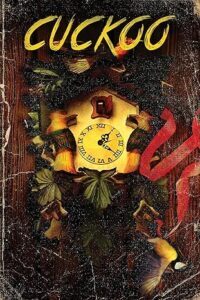 Click the pic for more on Amazon!The Interview
Click the pic for more on Amazon!The Interview1. Time I: Fragmentation. Cuckoo’s table of contents reveals that chapters alternate among “Now,” “Before,” and “After,” presenting time in a non-linear fashion. Even within chapters, narration doesn’t necessarily follow strict timelines. Why did you decide on this approach for telling your main character’s story? The cuckoo clock is one of your title’s references. What’s the importance of clocks in Cuckoo? Does Cuckoo have a specific “theory” of time to convey? If so, what is it? If not, what will your readers gain by adapting to your unusual approach to temporality in storytelling?
ME: The use of different timelines was a way to keep the reader as off balance as Cuckoo. The farther in we travel with him, the more he loses, the more erratic the world becomes. But the madness bleeds in everywhere. It was always there. Despite what seems so far-fetched, the truth is also always there. The imagery of the tit, and the clocks, was the original image in my head when I had the idea for this experiment. And I am of the mind that time is useful, but it is also imaginary. A construct we invented to assert control over the chaos. For all the good it is used for, it is just as detrimental when given too much power to control us. The dichotomous nature felt right at home.
All that said, there was no plan. I knew it took place in three periods, but until the first transition, I wasn’t aware how they interplayed. It was very much an intuitive, stream of conscious experience. I knew certain things I wanted to incorporate, but it mostly was based on feel. When the tension hit the right note, or the happiness, it was time to switch. An ebb and flow I surfed as I caused the story.
2. Isms. Cuckoo’s fragmentation of and meditations on time kept me thinking of High Modernism, and since I’m a nut for late Henry James, Virginia Woolf, and William Faulkner, these were good thoughts. However, I also kept thinking of the surrealism of Joseph Heller’s Catch-22 (1961) and Adrian Lyne’s film Jacob’s Ladder (1990), not to mention Dali and Bunuel, and then all the questioning of what is real and presentation of multiple realities made me think pure postmodernism. How much do you think Cuckoo relates to each of these isms? Do you identify with any ism in particular? Why or why not?
ME: Absurdism. This entire idea came from Kharms, a Russian absurdist. His stories and plays were mediocre, but his ideas got to me. He questioned if what we write is fiction, then literally anything we write is possible. I’d wanted to play with the unreliable narrator trope, and this struck me as the ideal point. If the narrator is unreliable, but every word he says is the truth, as he remembers it, is he unreliable?
Beat is also a big influence on it. So a combination of the isms, really. Brautigan, Kerouac, Corso, all the way to Hunter S Thompson. They combined philosophy and fiction, blurred the lines between honest account and story. So many things have inspired and formed the foundation of how I view the world and stories. The need to make the reader think and contemplate more than just the tale on the page.
3. Yellow. Yellow is very important in Cuckoo. It is also important in Gilman’s “The Yellow Wallpaper” (1892), Chambers’s The King in Yellow (1895), and, for that matter, Dostoyevsky’s Crime and Punishment (1866), and in all cases it seems related to madness and degradation. Why yellow in Cuckoo? How does it operate? What makes a color scary? In addition to repeating yellow, you also repeat sounds (such as tearing Velcro) and other sensory information in key moments that signal changes in perceptions of a situation. Why does such sensory information become so important in these moments?
ME: You listed so many great uses of yellow, and whenever someone mentions the use of the color to me, it is always something different they were reminded of. This is a testament to the power of color. Nature uses it as a warning system, and deep down, we do as well instinctively. It gets lost in writing, emptied as words if not given a chance to kindle those buried feelings. By repeating the colors and sounds, it gives them weight, depth. Then they color everything with unease and tension.
I went to a panel once about body horror some of my friends were speaking at. Christine Morgan, one of the queens of horror, made a great point about writing to the other senses as well. The smells. The sounds. Tactile sensations. She was right. The words are two dimensional, but the feelings are there.
4. Mental Illness. Thanks to Poe and others, romantic notions surround the idea of “madness,” especially when love (or love lost) gets involved. To what extent does Cuckoo indulge in a romantic view of madness? It’s certainly not limited to such a view, as cues throughout the book indicate that the main character has not only a diagnosable but a diagnosed condition. A reference to being manic appears early on, other characters inquire about his sleep patterns, and questions eventually arise about his meds. Do you have a specific diagnosis in mind? If so, what is it, and what inspired you to write about it? If not, what do you think the cluster of symptoms you describe adds up to?
ME: I am bipolar, with borderline personality disorder. The BPDs, as I call them. I am also very open about it because I don’t believe there is a stigma on it. I am not embarrassed. I hope being so open about it allows others to see they are not alone in their struggles. It can be very lonely thinking no one understands how you feel. I took my lifetime of trying to understand my own brain and went to the worst-case scenario with Cuckoo. I have gone into some very severe spirals, where I was lost and felt no hope of ever being found. I went there for three months for this. I can’t write something if I do not feel it. If I didn’t, how can I hope to make the reader? I liken it to method acting. Emotionally grueling, but the best art comes from that place where pain and discomfort meet in a flash of blinding beauty.
I’m not sure about romanticizing it in this context. I never considered it. As much as I’d like to normalize being open with mental issues, this was more the rabbit hole than anything else.
5. Time II: Trauma and Repetition. At least one condition from which your main character seems to suffer is PTSD, as details from a traumatic childhood as well as from more recent traumas appear throughout the narrative. To what extent is Cuckoo an exploration of trauma and its lasting impact? One of PTSD’s best-known symptoms is a tendency for the mind to repeat, or relive, traumatic moments. Although moments seldom repeat identically, repetition is a key factor in your novel’s structure along with fragmentation. Do you see trauma as a source of your narrative’s repetitions and other non-linearity? Why or why not? The novel’s description (above) asks, “How broken can you become?” How broken is your main character? Is he a broken clock? Are some traumas beyond repair?
ME: Absolutely. It all plays into each other. We become so consumed, the original act becomes a myth and can lose its entire original meaning. It’s in the varied repetitions where we find glimmers of truth as we fall farther from answers that could ever hope to satisfy.
I think Cuckoo was as broken as possible, by himself, the world, loss; you name it, and it added up. But through everything he lost, he found himself as he went along. Was he repaired? Are any of us? That’s subjective based on personal feelings, I think. We don’t make it out of life alive, or unscarred. The completion for him was finding someone whose strengths balanced his weaknesses. Someone who made him feel like who he could be Unfortunately, that went sideways.
6. Metanarrative. One of the more postmodern aspects of Cuckoo is narrative self-consciousness, the story’s reflection on itself as a story. For example, the narrative voice sometimes reduces story elements to typical, repeatable elements, and it also comments on the story’s progression and qualities, referring to being “not even halfway in” or to things getting “weird.” Why did you include this degree of narrative self-consciousness? How conscious do you want readers to be about the fact that they’re reading? Do you see metanarrative as another tool for foregrounding the unreliability of your main character? Why or why not? Storytelling is, indeed, part of your story: without spoilers, what can you say about Cuckoo’s views on the power of storytelling?
The one thing I did not want to do in this was hold the reader’s hand. To spoon-feed them the story in a way that made it easy. I felt acknowledging the reader was a way of letting them know they weren’t alone in the confusion. In the pain. I found it to be effective, in the same way as switching time, to maintain the off-balance nature.
7. Poetry. Your bio (below) identifies you as a poet, and you put those skills on full display in Cuckoo, including passages of more traditional poetry (with line breaks) and passages of what I can only call prose poetry, beautifully descriptive writing that follows associational patterns of imagery (in regular prose-paragraph form, mostly in the “Now” sections, if I’m not mistaken). Do you agree that some of the prose passages also deserve to be called poetry? Why or why not? Why did you decide to include poetry in this novel? What prompts the poetic interludes, and how do they help convey aspects of the main character’s personality and psychological state?
ME: This may be the easiest to answer. I never considered writing fiction, not seriously. But I cannot stop writing poetry. I don’t care for a lot of poetry despite its power over me, which probably sums up my bipolar nature as aptly as anything could. I love Bukowski and Plath. What I discovered was, both wrote at their most brilliant when they found a way to make poetry and prose one. Pulp by Bukowski IS his poetry in prose form. And The Bell Jar? Sylvia’s cutting wit is on full display and so layered in the prose, it simply is the prose. I was trying to write stories based on convention, but in doing so, I hampered my strengths. I had experimented with stories, “Ascomycota” in dreamwhispers is one where I tried to blend them, and felt it was a success.
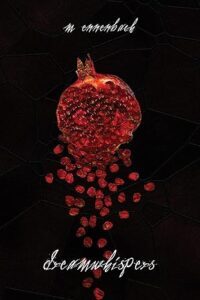
I am a poet. Despite what I write, it is so ingrained, it will come out in my tendencies. I am particular. Word choice matters. I’ll stop writing if I can’t find the correct word for the situation. It is very much about how everything flows for me. I stopped trying to rein it in. I harbor no illusions of being a best seller. But I can be authentically me. My hope is someone reads Cuckoo in a hundred years and is inspired to take the mold and shatter it. I don’t believe an author shines as brightly as when they write unabashedly in their own voice.
8. Horror/Love. Uncomfortably Dark Horror published Cuckoo, and “Dark Fantasy Horror” is one of its categories on Amazon. Cuckoo certainly isn’t a conventional horror novel, and I wouldn’t say it’s only horror, but in what ways would you say it is horror? What’s the scariest thing about it? The description (above) claims, “This is a love story,” a claim that the narrative tests a few times. What would have to be true for it to be a love story? How are love stories and horror stories related? If it is a love story, what inspired you to write a love story that is so… uncomfortably dark?
ME: I don’t really consider genre much going into a story. I was never really convinced Cuckoo was horror. Horrific? Yes. Brutal emotionally? Definitely. It was everyone who read it originally who told me it was horror. I can see it now, but to me it is a love story. The purity of love shining through the darkness.
The best horror stories have an element of love because love can mean so many things. Obsession. Desire. The need to protect the most important person in your life. The failure to do so. Dracula wanted his beloved. Had The Creature been shown love, wouldn’t Frankenstein have ended differently? Friday the 13th was about a mother’s love. Nothing is as rewarding, or as painful, as love, which leads its power to horror perfectly.
All of my stories in dreamwhispers and Cremated Remains have a theme of love in them. My poetry as well. It has been my life’s pursuit, and my favorite shade to color with.
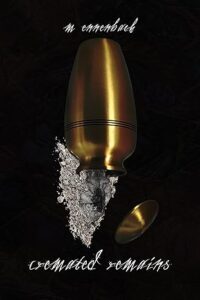
9. Healthy Love? Your main character reflects on how lost he’d be without the woman he loves, how incomplete he’d be—in sum, he says early in the novel, “We became one.” While I find his passion is vivid, fascinating, and moving, I also wonder if the way he loses himself in her is healthy. Do you intend to shine a critical light on passion so strong that it leads to losing oneself? Why or why not? For love to reach its peak, does it need to be impossible—star-crossed, as the Bard might say? Early on, your novel also brings up the fear of dying alone: what does that fear have to do with love?
ME: It speaks on how much emphasis we put in the hope someone can love us for the messes we are. I think of their love as healthy, just unfortunately, between two unhealthy people. We all want love, to be loved. I think we all lose ourselves, in the beginning at least. I am a hopeless romantic, though, and I hope it isn’t as much losing yourself, as finding a new dimension to grow into. Becoming something better than you were. Everything is crazy, if you boil it down. Electrified jelly, soaked in chemicals, piloting a meat suit with skewed perceptions. Love, for its insanity, makes a certain sense.
10. Access! How can readers learn more about you and your works (please provide any links you want to share)?
ME: My blog, mennenbach.com is where I do most everything. Daily poetry, book updates, my about page links to Amazon and my shirts and stuff.
About the Author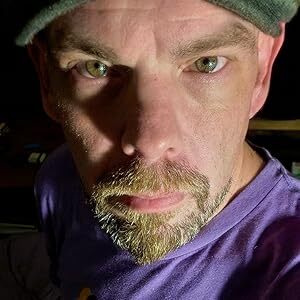
M Ennenbach is a poet and writer from Texas. dreamwhispers, an evocative collection of short fiction, and Cuckcoo are available from Uncomfortably Dark Horror. A half dozen poetry collections are available from Potter’s Grove Press as well as his blog https://mennenbach.wordpress.com/about
The post Interview with Author M. Ennenbach: Cuckoo appeared first on L. Andrew Cooper's Horrific Scribblings.
October 9, 2024
Interview with Author David E. Grinnell: The Antiquarian
Sharing a fascination with dark subjects similar to that of his novel’s hero, David E. Grinnell discusses the moods, influences, and ideas that shape The Antiquarian.
The AntiquarianThe pages of this diary belonged to a young British archeologist, Nicholas Ainsworth, known for his odd curiosity for the morbid and macabre. HIs expedition for deviant burials and historical artifacts in the Transylvanian Alps abruptly ruined by the approaching Nazi occupation, he seeks refuge in a mysterious old castle. As he settles into the abandoned gothic ruins, strange phenomena cause him to question his sanity… and whether he is truly alone.
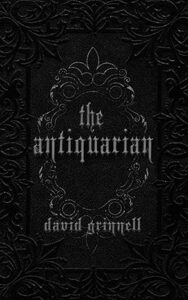 Click the pic for more on Amazon!The Interview
Click the pic for more on Amazon!The Interview1. Epistolary Perspective. The so-called “Neo-Gothic” literary revival of the late nineteenth century, which included Bram Stoker’s Dracula (1897), one of The Antiquarian’s touchstones, often favored epistolary forms, so your novel’s diary form recalls some of those classics. Why did you choose the form of a diary for your story set in the 1930s and 40s? The diary not only locks the reader in Nicholas’s perspective but in the limited details he chooses to share. What advantages and disadvantages does this limitation create? Your book begins when Nicholas is quite young. What might a more mature reader be able to see in Nicholas’s writing that Nicholas himself hasn’t yet understood? How does the epistolary form, which increasingly emphasizes Nicholas’s state of mind while writing, contribute more generally to the development of character psychology and narrative suspense? Nicholas reflects on grief and considers his writing therapeutic. To what extent is this novel about an approach to processing grief?
DEG. I felt the form of a diary would establish a stronger connection with readers because a diary is very deep and personal. As a reader, you’re reading the most inner thoughts of an individual and inside their mind. The epistolary structure also, I felt, enhances the experience of the unreliable narrator because of how limited readers are in Nicholas’s perspective. These I believe are positives; however, there are negatives to how Nicholas’s perspective is limited. For instance, for the writer, epistolary stories can be difficult because of finding a balance between giving the reader enough information to participate in the story, but not so much information that the voice becomes inauthentic. Writing this novel took eight years, and throughout those years, I really had to develop Nicholas. There were several drafts where I pondered Nicholas’s voice. How would he talk? How would he speak? How would he write? I really had to polish him throughout the years through his diction. Yet, for me to do this, I’ve had to have more experiences in my life. As I grew, my writing grew through my experiences of grief, loss, love, and such.
2. Dangerous Books and Ideas. While he fears losing his mind, Nicholas seems particularly afraid of what he reads in certain books that discuss the supernatural and the occult, particularly topics such as spiritualism and spirit photography, both of which were popular in the late nineteenth and early twentieth centuries. Why do such topics, which he at least consciously considers to be nonsense, disturb him so much? In your Preface you discuss how M. R. James’s antiquarian ghost stories influenced your story, including their frequent inclusion of a book that “at least attracts the unwelcome attention of a supernatural menace.” In your book’s world, why does a book have this kind of power? Should Nicholas approach reading with more trepidation? Should we all?
DEG. For the scholars, professors, archeologists, clerics, and antiquarians, the archive gives them a feeling of both skepticism and intellectual superiority. The supposed cleverness of characters like Nicholas lets them solve puzzles and uncover clues where others have failed. However, their over-confidence in rationalism is always their undoing. Digging into the past usually awakens a deadly supernatural force of some kind. Away from their archives and out in the real world, these solitary scholars soon find themselves in over their heads. Archaeological excavation in these tales is usually a violation of some kind, a sacrilegious curiosity that demands punishment. Such fiction shows us that the search for knowledge of the past may unleash horror.
3. Scared of Architecture. Gothic fiction, the forebear of modern horror, got its name from Gothic architecture and the renewed interest in it taken by the British upper class starting in the mid-eighteenth century (Horace Walpole, author of the first Gothic novel, 1764, built a castle “folly” like the Hasdeu Castle “folly” that appears in The Antiquarian, though Hasdeu was built 1893 – 1896). Your novel uses several Gothic settings: why do you think old stones, pointed arches, crenellated towers, and flying buttresses still fire the dark side of the imagination? What’s scary about Gothic architecture? Can Gothic ruins resist having symbolic implications? What might the ruins you depict symbolize?
 Walpole’s “folly” Strawberry Hill
Walpole’s “folly” Strawberry Hill
 Hasdeu Castle
Hasdeu CastleDEG. Gothic architecture is fascinating, mysterious, and potent. Imagine seeing a Gothic style church, house, or castle. Such structures are permeated with long spindle-like aspects of the Gothic, with spires and finials and everything sort of looking like it could prick visitors, all inspired by pagan rituals that would take place under the canopies of dark forests. Forests incidentally often have a similar play of light and shadow, which is used to theatrical effect in Gothic churches. Pipe organs and acoustic reflections give everything an otherworldly vibe, too.
Gothic Revival furniture of the 1800s also looks like something out of a nightmare. It has an almost animalistic quality to it. Victorian Gothic houses can range from charming to something out of a haunted house movie, and the Victorian Gothic residence is the archetypal creepy old house.
The other aspect of medieval Gothic is its use of surreal imagery. The grotesques, gargoyles, sculptures and carvings, especially those in the tympanum are downright scary looking. It’s hard to look at something like this and not be sufficiently creeped out. And imagining an entire building encrusted with such images makes it all the stranger. The Hunchback of Notre Dame by Victor Hugo is a prime example where Hugo utilizes Gothic architecture as a collective artform, reflecting the experience of humanity as it develops over time and across different historical periods. In other words, Hugo argues that architecture is something vital and “alive.”
 Notre Dame de Paris Cathedral
Notre Dame de Paris CathedralThe Antiquarian depicts architecture as vital and “alive.” For example, Iulia says to Nicholas, “’The room does have impressive colours, the shape and their symbolism overwhelm even the initiated guest. Each room has their profane destination, if we may put it this way, the castle hosts this ‘room with animals’” (Grinnell 291-92). Hasdeu Castle acts alive in the sense of emphasizing its architecture and furniture as animalistic. Furthermore, Hasdeu Castle also plays with light and shadow much like Gothic churches. For example, Iulia shows Nicholas, “’It’s not restored yet, but there are two small areas of old frescos which still exist on the walls. What you’re looking at is my head, having a pair of indefinite wings, illustrating the impressions of my seraphic appearance together with the Trinity’s Triangle. Just below, there is a round niche, an energetic receiver transmitting symbols of harmony. The room’s obscurity is important because only in darkness the little light at the end of the tunnel can be seen!”’ (Grinnell 292) The architecture here is dreamy but dreadful because of how light and darkness illuminate such art. Iulia describes her appearance of the carving as “seraphic” which means “like a seraph.” People with gentle, innocent faces are often said to be seraphic, and Iulia is kind of dreamy. Even Nicholas describes her beauty, “She had a long slim neck and astounding facial features that would make any man fall in love with her. Her eyes were mysterious as if they could see through my soul and it looked as if she was staring right at me” (Grinnell 260). Iulia’s beauty is dreamy, which also transmits the castle’s mysterious aura. The layout of the castle is in the shape of a cross, having three towers decorated with esoteric symbols meant to aid communication with the other world.
4. Gothic Moods and Influences. I think I’m fair in saying that the combination of settings, characterizations, and plot elements creates an overall Gothic “mood” for The Antiquarian, but I’m not sure what that means. How would you describe your novel’s mood? Is it Gothic? Why or why not? We’ve touched on Bram Stoker and M.R. James—what were other influences on your novel, literary and otherwise, and how do their influences appear? Can you think of an influential fictional character from another work whom you’d claim as Nicholas’s close relative?
DEG. The Antiquarian is a combination of several genres such as gothic, horror, epistolary epic, romance, and historical fiction. Arguably, the novel blends history and folklore. It delves into the history of the WWII era of the UK and Romania, yet there is folklore ranging from the mysteries behind Whitby Abbey and various locations in Romania. As for other influences, authors like Nathaniel Hawthorne, Edgar Allan Poe, and Mary Shelley obviously influenced me. For example, Hawthorne’s House of the Seven Gables, with its depiction on the daguerreotype and how the character “Holgrave” captures pictures, appears in the mysteries I portray in the novel. Poe’s published article on “The Daguerreotype” also influenced me as I learned about the Daguerreotype process and how pictures are developed. The Daguerreotype influenced me to highlight the ambiguity about Bogdan Hasdeu and how he immersed himself in seances and in the study of esotericism. Other influences for The Antiquarian as an epistolary also include The Historian by Elizabeth Kostova. This work combines the history and folklore of Vlad Tepes and his fictional equivalent Count Dracula. The novel is an eerie tale that is concerned with history’s role in society and representation in books, as well as the nature of good and evil.
I’m not sure if I would claim any certain character related to Nicholas; however, I can think of a fictional character from a different work that resembles Nicholas by the means of the pursuit of knowledge. Victor Frankenstein from Mary Shelley’s Frankenstein is very similar to Nicholas as far as the drive for knowledge. In Frankenstein, light symbolizes enlightenment, knowledge, and discovery. Light also accompanies nearly all of Victor’s epiphanies. When Victor discovers the secret to creating life, he describes his feelings as if “a sudden light broke in upon me.” He envisions pouring a “torrent of light into our dark world” through the creation of a new species. Nicholas in The Antiquarian alludes to light in the same way, “These are turning into dark times and Romania needs a ray of light. Let the knowledge I gain from deviant burials be such a light…” (Grinnell 236).
Another major influence for the novel is Iulia Hasdeu. I made a dedication page in honor and memory of Iulia. The novel is dedicated to her because she inspired me to write this story and book. I spent roughly eight years researching about Iulia, her life, and works. The editor who worked on The Antiquarian with me said, “I felt for Iulia as a character and historical figure. You captured the loneliness of a brilliant mind never able to burn brightly again not because of death but because her undeath keeps her trapped away from the world.” That’s the very thing I wanted to capture when portraying Iulia and yet honor her.
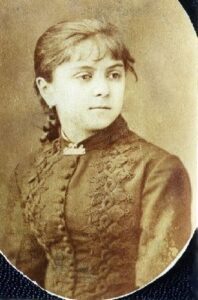 Iulia Hasdeu
Iulia Hasdeu5. Scared of Romance. Nicholas has troubles in the romance/sex department. When he moves on from his first love to a second, he imagines himself in a triangle, guilty about new feelings because of lingering old feelings. This pattern repeats when a third woman comes along. When he thinks about his reactions to women, words such as “terrified” are not uncommon. Nicholas’s degree of sexual repression is not in step with his times: what is Nicholas’s problem with women, and where does it originate? How deeply do you think sexual issues affect his psyche? Do you think sexual repression might contribute to his more unusual experiences? Why or why not?
DEG. I don’t think Nicholas has a problem with women; however, Nicholas’s sexual repressions are not unintentional. The Antiquarian is, at its root, a ghost story, and as I’ve mentioned in the preface, M.R. James’s ghost stories helped me develop Nicholas as a character, and this also includes his troubles with romance. For instance, in an essay James states, “They {stories} drag in sex too, which is a fatal mistake; sex is tiresome enough in novels; in a ghost story, or as the backbone of a ghost story, I have no patience with it.” I, on other hand, do like romance and have patience with it. This contrast between James’s lack of patience with romance and my liking of romance, I think, foregrounds Nicholas’s troubles with romance and sex. For example, my friend who is also a Curious Corvid author, Byron Griffin, said, “This a story that I would say is a slow burn yet there is ever present within it an air of the gothic that will serve to drive you on, though the sweetness of the story’s inclusion of love is also a hook that will keep you pouring over the text.” The way Byron stated this is crucial because there are moments in the novel where Nicholas has experienced romance in a sincere and vulnerable manner; however, such romance is not overtly sexual.
7. History as Obstacle. You seem to have done your historical homework, and having events set in the midst of historical upheaval adds tension and intrigue, but in a move I found rather refreshing, your characters don’t suddenly land in Berlin when World War II breaks out. If anything, history seems like an annoyance to them. It gets in the way of research! How would you describe your novel’s approach to history? Why are historical events mostly in the background? As I read, I found a lot of suspense in not knowing how the war would affect characters who end up in Romania: I had no knowledge of Romania’s involvement, or lack of involvement, in the war. Did you anticipate that most American readers would be similarly ignorant and thus experience similar suspense? When writing historical fiction, who’s the ideal reader—the reader who knows more or the reader who knows less about your historical setting? Why?
DEG. I used history in the background of this story to highlight and capture the time period. To make the reader feel as if they are in that time period, too. When I first wrote The Antiquarian it was a short story called “The Diary of Nicholas Ainsworth,” where the first line was actually, “I cannot help but quiver in fear of Nazi Germany taking over the country of Romania” (Grinnell 256). That very first line creates suspense, and such terror is embedded, too, when Nicholas writes, “I can still hear the engines of the German tiger tanks, as they shot many of the buildings. I can hear the roaring within my skull, the sound of planes as they soared above and dropped their bombs along with the foot soldiers as they stormed out of their grey trucks and shouted in their German language” (Grinnell 256). Nazi Germany occupying countries of Europe was very terrifying, and such terror I wanted to build tension on. It’s like in Bram Stoker’s Dracula, where Dracula is usually in the background throughout the novel as Stoker’s cast of characters try to hunt him down. Stoker created this dread by having Dracula in the background, in the “shadows,” so to say, to establish this terrifying dread. Such a dread is what I strived for with the history The Antiquarian is steeped in. Nicholas writes when he’s inside the castle, “The rumble of tanks echo and thunder across the far distance. The skies are bleak and grey. It’s a constant reminder of the fear and terror which surround me” (Grinnell 328). History acts as a constant reminder to not only Nicholas but to readers about the fear and terror while facing the fear of the unknown from the castle. Even the history of the castle is used in the background to fuel the atmosphere and dread.
8. Access! How can readers learn more about you and your works (please provide any links you want to share)?
DEG. Anyone can find my works at the Curious Corvid Publishing website: https://www.curiouscorvidpublishing.com/davidgrinnell
I can also be found on Amazon: https://www.amazon.com/stores/David-Grinnell/author/B095HFXZXY
Instagram: https://www.instagram.com/davidpgbooks/
Facebook: https://www.facebook.com/Davidpgbooks
Curious Corvid also has their own discord page where anyone can join, interact with other Corvid authors, participate in special giveaways, listen in on live reading events and more. It’s such a great community: https://www.curiouscorvidpublishing.com/nightswithebonpinion
About the Author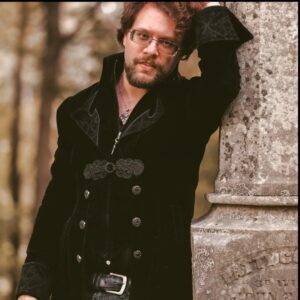
David Grinnell, who also goes by the pen name David Edgar Grinnell, is a poet, author, and literary scholar from Cleveland, Ohio. He was born 1992 in Norfolk, Virginia but grew up in Bedford, a suburb. In 2014 he attended Cleveland State University and graduated with his Bachelor’s in English. Grinnell specializes in Romanticism and the Gothic, and he draws inspiration from vulnerability. He reflects and portrays love alongside hope, melancholy, and even occasional despair. Currently, he is a funeral director apprentice at St. John Funeral Home.
The post Interview with Author David E. Grinnell: The Antiquarian appeared first on L. Andrew Cooper's Horrific Scribblings.
September 25, 2024
Interview with Author Megan Stockton: Lovely, Dark & Deep and Impulse
A writer with range and diverse storytelling talents, Megan Stockton discusses the very different scares involved in two of her most recent works, Lovely, Dark & Deep and Impulse.
Lovely, Dark & DeepEvery year, Six Mile Island has a seasonal shutdown for serious weather. This year, the forecast is calling for the storm of a century, so most of the population has agreed to an evacuation to ride out the storm on the mainland. When a child goes missing on the cusp of the oceanic storm, a select few inhabitants are left behind to perform a frantic search. Little do they know that the ocean is bringing more than a storm to Six Mile… An ancient species hungers from the sea.
“Megan Stockton writes on a different plane than the rest of us. There’s poetry in her madness, and chilling sea songs sunk layers deep within her prose. Lovely, Dark & Deep is an oil spill. You’ll be tricked by Megan’s smooth writing because it’s as beautiful as the most vibrant iridescence, but within those sharp colors hides a story slick black and coated with oceanic trauma. This book is Megan’s best, and it’s a sneak peak into the future of indie horror.” Gage Greenwood, author of Bunker Dogs
“Surf, sand, and…blood? For those who love the beach, Megan Stockton will have you questioning your decision as the watery nightmares in Lovely, Dark, & Deep will haunt you well after you turn the last page.” Jay Bower, author of Cadaverous
“Our sonar is picking up an enormous talent rising up from the depths of the horror scene. Megan Stockton is a leviathan of a writer, and Lovely, Dark & Deep will surely be her breakthrough. Pray for us poor readers when this stunning novel makes landfall.” Clay Mcleod Chapman, author of Ghost Eaters
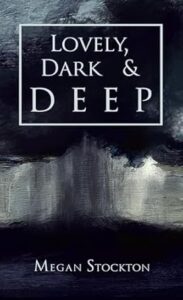 Click the pic for more on Amazon!
Impulse
Click the pic for more on Amazon!
Impulse
Jason is having a midlife crisis, but not the kind where you go buy a boat or motorcycle. He’s been binging porn and meeting up with casual encounters at a nearby motel for months, and it just isn’t enough anymore. After scheduling another hookup, he picks up a hitchhiking teenage girl on the side of a desolate road. What first seems like an opportunity for him to take advantage of her quickly turns on its head when he realizes she is the real predator.
“An edge-of-your-seat, tension-filled ride that will have you regretting every wrong thing you’ve ever done.” Rayne Havok, author of the Killstreme series
“Stockton brings us a brutal page-turner that doesn’t go where you expect it to. Baby and Sassy are names you won’t soon forget!” – Jason Nickey, author of Rural Decay
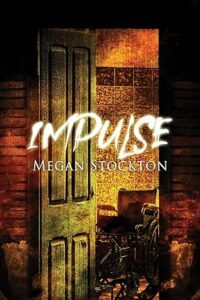 The Interview
The Interview1. Lovely, Dark, Sensory Depth. Your writing in both books distinguishes itself with an emphasis on details that address all the senses, consistently going beyond sight and sound. In Lovely, Dark & Deep, I think of the smells, tastes, and feelings of the ocean and rainwater; in Impulse, I think more of the smells, tastes, and feelings of bodily secretions. Why do you concentrate so much on such diverse sensory details? Do you have a particular method that ensures you will address all the senses consistently? What do descriptions of smells, tastes, and tactile sensations add to stories—particularly horror stories?
MS: I have always felt like a hallmark of a good book is one that encourages you to imagine with more than just the visual sense. This lends itself to becoming a much more immersive experience. If you aren’t guiding your reader through every accessible sense, you’re missing out on really sinking your hooks into them and how they experience your story. For example, our sense of smell is strongly associated with memories, and so I can only assume that means it has a very significant impact on us emotionally. As a reader I love getting a phantom taste, smell, or sound as I’m imagining the scene around me. When I’m writing I document everything I encounter, and always try to involve every sense. I think this is especially important in horror because we are exposing our readers to a horrific fantasy that is specifically affecting because of the high emotion it elicits; we want the reader to forget they’re just reading a book. When they blink and realize they’re at home on the couch, you want the sensations to linger.
2. Structure and Suspense. Both books create outstanding suspense. Each has a major suspense-story arc, building through the narrative toward a big finish, as well as smaller arcs within scenes. While such arcs aren’t unusual, you construct yours with precision that creates very smooth and exciting rides. What’s the secret for writing effective suspense? For the larger arcs, how does withholding and revealing information about what’s happening (with the sea creatures in Lovely, with Baby and Sassy in Impulse) relate to the suspense of what will happen? For the smaller arcs, what techniques allow you to cut right into readers’ nerves?
MS: I don’t know if I have the secret for building effective suspense, but I tend to write from character POVs that are very limited. I want the reader to only know what the characters know. When you’re using alternating POVs, like I use in several of my books, you can expose the reader to just enough information that it raises the stakes with the next POV. So if we follow Character A through a dark tunnel, and the next chapter Character B gets a phone call that there are cannibal zombies in the cave below, you want to scream a warning when you return to the dark with Character A. It’s always easiest to give the reader all the information and leave nothing hidden, because as writers we want those reactions and emotions to boil to the surface as quickly as possible… but if you trust your reader to be patient and, maybe even more importantly, curious, then your payoff will be so much better when the reality sets in for them in the story.
3. Extremes. I first encountered your writing in Jonathan Butcher’s Your Loved Ones Will Die First, so I expected and found the “brutal” content lauded in both the description of your work above and in your bio below. Impulse more clearly follows hardcore protocols, but both books get pretty grisly—would you call either or both hardcore horror, and what’s the reasoning behind your categorization? Are you hardcore? What inspires the grisly moments? What makes gruesome good?
MS: I think as an individual I’m pretty far from hardcore haha. I love extreme horror both as a reader and as an author. I would say that my titles like Impulse and Bluejay lend themselves to being more on the hardcore spectrum simply because they indulge in those graphic moments. I could easily make something like Lovely, Dark & Deep more extreme just by leaning into those scenes a little more. There’s absolutely a place for both. I love describing things in unexpected ways. Using traditionally soft or “pretty” descriptors for something grisly or violent, for example, or blending sensory words in unusual fashion. For me, gruesome is best when the reader cares. If you feel something for the victim, whether positive or negative, the scene is going to have a heavier impact. Some people cringe, some people giggle and kick their feet… The goal is to make you feel something. You can’t just throw blood on a canvas and expect someone to scream… if you show them that it’s the blood of a loved one though… well, you get the idea.
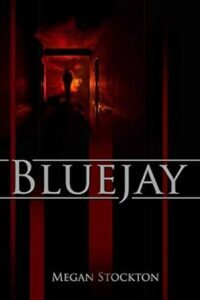
4. Making a Monster I. The description of Lovely, Dark & Deep mentions an “ancient species” that “hungers from the sea,” but since you don’t use familiar sea-creatures, part of the book’s intrigue derives from learning about the creatures and the “rules” (as one character reflects) for how they operate. Comparisons to familiar monsters arise as the book reveals details about the monsters at hand, but your “ancient species” never loses its aura of mystery. How did you design your sea monsters? Which do you think is more powerful—both in the world of the story and in its impact on readers—their psychological or their physical impact? Why? A pastor provides an account about the first settlers of the book’s island setting that could amount to canonical monster lore—should readers take this passage as concrete insight into what the monsters are, do, and might do again in your future writing?
MS: The initial concept of Lovely, Dark & Deep (that is, the idea of vampiric creatures preying on an isolated town due to forces of nature) was heavily inspired by 30 Days of Night. I was tossing around ideas and was visiting a small island on vacation when a local told me that the entire island was only ten miles (or something) from end to end. I frequently write small town settings, and this was a small town isolated geographically by water, and the cast of characters is isolated drastically by the inclement weather. So I started the book with my mind on vampiric creatures, but I found myself wanting something a little more fresh than the tried and true vampires of literature. I decided to kind of create my own version of sirens; borrowing ideas from mermaids, sirens, draugr, and other legends. I truly feel like the emotional impact of these creatures is far more terrifying than their physical appearances. These are monsters wearing the skin of people that you once knew and loved, and in some ways they’re still those people but all of the most intense and passionate parts. The pastor’s tale of a similar situation happening years ago was just to set up the idea for the reader that this could all be a shared psychosis from toxicity or poisoning. Of course, that’s really a red herring… I also wanted to suggest that this had happened before but very, very long ago and had been passed off as a tragic natural accident.
5. Lovely, Dark, Perspectival Depth. Lovely, Dark & Deep switches from one character’s third-person limited perspective to another’s at each chapter break. Why did you choose this approach for this story? What did the alternation of perspectives contribute to the unfolding horrors? What challenges did it present? How did you establish different tones, moods, and internal voices to differentiate each recurring perspective character? One character is a young boy—how did you make his perspective authentic?
MS: I write most of my books in alternating POVs; it’s just my preferential storytelling mode. I love offering these variable viewpoints to a story without disclosing the thoughts of every character in the book. It also means that no one is truly safe, and even if you lose a POV character there’s still more to tell the story for us. I really just slip into the skin of whoever I’m writing and try to execute their unique “voice” even in the narrative portions of the story. The ways they view and interpret things are how they are delivered to the reader, down to the way they may describe or word something. In regard to the POV of Fisher, I have only written a child’s POV three times before as I find it the most difficult for me to pull off. I think that children can offer such a special view of situations, especially high stress and unusual circumstances like those in Lovely, Dark & Deep.
6. Queer Leads. In Lovely, Dark & Deep, two central perspective characters, arguably the leads, are tough, capable women who have a romantic history together that affects their interactions and major plot points. Why did you choose to put former same-sex lovers at the center of the story? The book doesn’t use words such as “lesbian,” “gay,” or “bisexual.” Why? A man interested in one of these women doesn’t seem fazed by her romantic history—in this fictional universe, can he safely presume pansexuality? Regardless of labels, what does putting strong, women-oriented women at the center do for your story?
MS: I didn’t have any motivation for making Lyra and Felix two women vs. making them a heterosexual ex-couple. When I write queer characters, I rarely put flashing lights and signs above their heads because before their sexuality they are just characters. I push for seeing both women and queer characters in every role imaginable, because (as I say so often) we don’t need more representation, we need better representation. I want it to feel just like every other character or relationship you’ve ever read, or maybe even better. These are complex characters with uncomfortable pasts together, real personality flaws just like everyone else, and I don’t want to give anyone time to balk at but they’re queer. I tried to suggest that Landon was just a young starstruck man and, despite knowing that Lyra was not interested in men, he hoped that he might eventually win her over someday. Just youthful ignorance and puppy love. I think some people still shy away from female-led stories, especially in horror, but I want it to be unavoidable if you’re reading good books. I write plenty of male characters, and some of my books are led by a nearly entirely male cast, but we need more books in our genre that feature strong female leads who are strong because of, and not in spite of, being a woman.
7. Fight or Flight and Other Impulses. At several points in Lovely, Dark & Deep, the narrative refers directly to characters reacting to their fight or flight responses, biological impulses in reaction to danger. Why does your writing cut down to such a physical level when describing characters’ behaviors? The title of your more recent book, Impulse, seems to point to primal responses, too. What’s impulsive about Impulse—what basic behavioral motivations does it map? How does your treatment of character psychology in Lovely, Dark & Deep compare to that in Impulse?
MS: I usually call this point of desperation being “reduced to teeth.” I find that I’m really fascinated by the response of otherwise normal people in situations like these and how unexpectedly people will react when faced with unimaginable terror. Beneath it all, we’re all driven by these very basic instincts, but we all handle those urges and desires differently, and I think that alone often makes for an impactful story. I like to focus more on the fear of who you may become rather than what is driving you to that turning point. In Impulse, I think the entire story is about men acting on their primitive and selfish urges, and that drives the entire chain of events. The biggest difference between Impulse and Lovely, Dark & Deep is that everyone in LD&D is generally good at their core. Even when they make selfish choices or bad decisions, they’re still good people. There are no good people in Impulse. We want every terrible thing that happens to Jason to continue far beyond the end of the book, and maybe we even root for Sassy and Baby and their special brand of vengeance… but at the end of the day, evil is just a coin with two faces, and regardless of how you flip it, it spends the same.
8. Making a Monster II. Impulse is more grounded in “realism” in that it lacks supernatural elements, but that doesn’t mean it lacks monsters, or at least creatures—this time, people—who do very bad things to people. How did you design Jason, Baby, and Sassy? Being people, they’re not inclined to see themselves as monsters, and they might not be. Jason, for instance, insists that he’s good, or at least too good for what happens. How much moral ambiguity do you think really surrounds your characters who do monstrous things? If a reader sympathizes with one of your characters, does the reader share in monstrosity?
MS: There’s no argument that the things that Jason, Fuzz, and Sugarman did were disgusting and wrong. Jason doesn’t see what he has done in the past as being anything more than misunderstood. He doesn’t even consider the moral implications, or how it affects the people involved or around him. In the beginning, he considers how every four years he gets a new set of victims, and he can forget about the ones who have left… but of course, as we see later on, he is faced with the lasting effects of the abuse he has dished out over the years. I like still giving these atrocious characters humanity, slipping in little things that the reader may identify with. In another one of my works, Bluejay, I introduce three of the most average guys who you probably can see you and your friends in… and then when they’re “reduced to teeth” you wonder if that could be you in the right circumstances. I hope no one sees much of themselves in Jason, but I think the moral dilemma of how much he deserves what’s happening to him can give us a peek into our own psyche. Are Sassy and Baby our antagonists? Antiheroines? Vigilantes? Are they just as much villains as Jason? I initially was going to make this alternating POVs as well but liked limiting the view to Jason to give the more unusual view of the “bad guy” at the hands of the (sort of?) good guys.
9. Turning Tables on Men. Impulse begins with epigraphs from the film I Spit on Your Grave (1978), probably the best-known entry in the rape/revenge cycle of films from its time, and from Jonathan Butcher’s novella What Good Girls Do, a contemporary juggernaut of hardcore horror involving the abuse of women and its consequences. These references create an expectation that your perspective character, Jason, who seems like an abusive creep, might meet some horrifying comeuppance at the hands of women. Does Jason reflect more generally on patriarchy and its support and protection of abusive creeps? Unlike a typical rape/revenge story, your tale doesn’t begin with any details of abuse that the seemingly vengeful women Jason meets, Baby and Sassy, have experienced. Their motives therefore seem more abstract. When they go after Jason, do you see them going after men, seizing the control usually limited to men, and correcting a more global imbalance? Why or why not? Would you consider this book feminist? Why or why not?
MS: Given his POV we downplay everything that he’s done, mention it in passing like it’s no big deal. Baby and Sassy are the women from that cycle of abuse who, after years of silence, decide to turn the abuse back onto the men who hurt them. Jason, Fuzz, and Sugarman were met with the monsters that they created, and they still didn’t think they deserved it. At the end it’s revealed that Sassy and Baby bring in another victim to let her have a taste of revenge, too. There are dozens of books where the entire plot centers around women being raped or tortured, so I think, yeah, maybe putting a man in that position could be considered a little bit of a feminist stand on the torture porn-ish trope. Guy vics are still not super common, especially at the hands of female characters. Instead of making him a sympathetic victim of two psychopaths, I hoped this could feel cathartic to women that have experienced similar abuse and wished they could get the same kind of revenge.
*BONUS QUESTION* Is Jason’s last name, Burnham, a reference to the Kevin Spacey character in the film American Beauty (1999)?
MS: YES!
10. Access! How can readers learn more about you and your works (please provide any links you want to share)?
MS: You can get my books, merch, etc here: http://www.meganstocktonbooks.com
Join the Patreon to read my books as they’re written and hang out with me and the rest of the Bad Luck Cat Club on Facebook. http://www.patreon.com/badluckcatclub
About the Author
Megan Stockton is an indie author who lives in rural Middle Tennessee with her husband and two children. She primarily writes dystopian, horror, thriller, and science fiction/fantasy novels that are character-driven and immersive. She is known for delivering works that are raw, thought-provoking, brutal, and cinematic.
The post Interview with Author Megan Stockton: Lovely, Dark & Deep and Impulse appeared first on L. Andrew Cooper's Horrific Scribblings.
September 18, 2024
Interview with Author Spencer Hamilton: I Will Devour You and Other Promises
Skilled and stylistically daring storyteller Spencer Hamilton talks about many striking dimensions of his eclectic new collection of horror tales.
I Will Devour You and Other PromisesSpencer Hamilton has returned with 13 brutal tales of horror, of succumbing to the darkness, of revenge and cruelty and monsters. A man wakes in his own grave… a little girl’s day at Smileyland turns into a nightmare… a grieving father faces the terror lurking beneath the ice of a frozen lake… the antichrist’s mother live-tweets her escape… a forest grows overnight in the Vatican… and a tumor whispers, I will devour you! Come on inside, but be warned—these stories devour.
With a foreword by Jeremy Megargee, author of Stained & Starless Places
“Hamilton doesn’t mess around, and he’s not afraid of taking chances.” —Michael R. Goodwin, author of Smolder
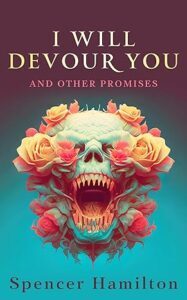 Click the pic for more on Amazon!The Interview
Click the pic for more on Amazon!The Interview1. Uncanny Devourers. A doppelganger in “This Goes Out to You,” trances involving automaton-like behavior in “Smile and Say Your Prayers,” submerged figures coming to the surface in “The Cold, The Grief,” creatures within trying to break free in both “The Tweeted Confession of Mariam Thornwood” and “I Will Devour You”—the first two directly evoke the tales of E.T.A. Hoffmann (1776 – 1822), on whose work Freud draws for his theory of “the uncanny,” a feeling of being familiar and unfamiliar at the same time that comes from “the return of the repressed,” an idea horror critics often use to describe what horror is really “about.” All these stories, and perhaps more in the collection, feature something I’d say invites a Freudian response, some dangerous (re)emergence that threatens to destroy the protagonist. Do you think the Freudian uncanny is a concept that applies well to your stories? Why or why not? What lies under the surface, what might be the repressed, in a tale such as “This Goes Out to You” or “I Will Devour You?” More generally, how important is psychology to your storytelling, and how do you develop your stories’ psychological dimensions?
SH: The psyche is a crucial aspect of my storytelling because I think horror as a genre is mostly an exploration of the mind when applied with abnormal pressure. We as an audience watch these characters make choices and respond to horrific circumstances, and part of the fun is wondering how we ourselves would behave in such a situation. In that same way, horror is great at holding a mirror up to society and then warping the reflection—or, worse still, proving that it’s not the mirror that’s warped, but the life we’ve accepted as the social norm.
More specifically, “This Goes Out to You”—as well as “The Tweeted Confession of Mariam Thornwood”—was my exploration of society’s mass perception: people are celebrating a “happy ending,” but our protagonist knows it’s a lie and can do nothing about it. “I Will Devour You” was more a play on body horror, which is especially horrifying for people like me with disabilities who feel their body betraying their mind.
But to answer your last question—the honest truth is that I develop my stories’ psychological dimensions in perhaps the most Freudian way possible: I let my subconscious drive that particular train. I can more consciously shape whatever came out later in the editing process.
2. Promising Experiments. Your story notes mention podcasts and other practical inspirations for some of your more stylistically experimental stories, but uses of second-person narration in “You Are Beneath It All” and “Evidence Locker VHS Tape #6,” Twitter-based narration in “The Tweeted Confessions of Mariam Thornwood,” repeated phrases to represent troubled consciousness throughout the volume, and other techniques are nonetheless bold. What draws you to techniques outside of narrative norms? What are the risks and payoffs? Stylistically, what’s the riskiest story in the book and why? Which risk paid off the most and why? What experiments are you most and least likely to repeat? Why?
SH: I think short stories are one of the very best mediums for experimentation. It’s how I got started as a writer—each story was a new opportunity to explore some idea. Because of that, I actually believe my first collection, Kitchen Sink, is far more experimental than I Will Devour You and Other Promises. Part of that was me finding my identity and voice as a writer, but I’ve always been drawn to writers that play with form. One of my absolute favorite writers of short stories is Paul Tremblay, in large part because he takes so many bold swings with various narrative devices, and I think it pays off in spades. I think why I love that so much is that a good use of epistolary or metafiction—even in much longer works like House of Leaves or Cloud Atlas—is like a good magic trick: you’re drawn in, it feels real, like this fictional world is lived-in … and you believe.
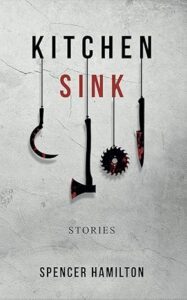
For this new collection, I’d say its opener, “This Goes Out to You,” is the riskiest of the bunch. Sure, later in the book there’s second-person narration, there’s found-footage, there’s a whole Twitter thread; but the opening story is a quick shot that ends with an unsettling amount of “WTF did I just read?” ambiguity. We as a culture put so much importance on a story’s ending, so something like the ending of “This Goes Out to You” tends to be a “love it or hate it” risk. But I think it’s “The Tweeted Confession of Mariam Thornwood” that lands best with readers, because as a culture we’re all so chronically online, and telling a story through social media allowed me to use shorthand, or internet speak, and worry far less about the actual craft of the writing. (Though, after Elon Musk burned it to the ground, I probably won’t use that specific trick again.) I also think second-person narrative voice, like in “You Are Beneath It All” and “Evidence Locker VHS Tape #6, is super underrated, so I hope to use that more in the future.
3. A Universe of Grief. Your story notes also point out that a figure known as “the angler” or “the grief angler” appears in three stories, a nice bit of world-building that adds cohesion to the collection. The angler is central to “The Cold, The Grief,” the story that so far is sticking with me most. Among other things, it seems to be about suicide, though the language is careful. Do you mean to tread into this territory, and if so, why do you handle it the way you do? Feelings of loss, guilt, and an impending doom that might be deserved run throughout these stories—why are they so prominent? What makes them so central to your vision of horror?
SH: I love learning that “The Cold, the Grief” stuck with you the most. I worked incredibly hard on that story, especially on putting Dusty through the five stages of grief—yet even then, after working through all of that, I think death was still a thing of relief for him. I definitely meant to put Dusty through such heavy emotions from the beginning—I know it may seem like a monster story, but it’s not, it’s about grief, about Dusty’s grief monster, if you will. I’d been introduced to grief horror by Laurel Hightower’s Crossroads and the conceit of that subgenre really resonated with me. Horror, to me, is a safe (ish) space to explore many taboo yet real-to-life subjects, a place where we can be made to look directly at an ugly thing but with the veil of the make-believe—almost a kind of therapy. This idea became most clear to me in the writing of “The Overnight Forest” (but we’ll get to that).
4. (Dis)connection. I like the bleak stuff. Another favorite is “The Stars, They’re Laughing,” a tale of soul-crushing alienation with a cosmic backdrop that I think qualifies it as cosmic horror, though it’s a very different sort of cosmic horror from that in “I Will Devour You,” which is more traditionally Lovecraftian. What draws you to the cosmic, and what is the status of the stars—the heavens—in your universe? Is alienation a universal condition, or is everyone connected but perhaps you/me? Is the creation and abuse of outcasts, like in “The Stars, They’re Laughing,” inevitable? Why or why not?
SH: I also like the bleak stuff—I love the general hope that Stephen King weaves in his stories, but I get an especial thrill reading his bleaker stories like Pet Sematary and Revival. Cosmic horror, I think necessarily so, feels extra bleak because the idea that we humans are actually insignificant in the grand scheme of things goes against just about every one of our instincts. Many religions are built on the idea that we humans are the reason for all of existence, which, to me, is wildly arrogant. That’s what I always loved about Lovecraft’s best stories: the real horror is that existence is far beyond the scope of even our wildest imaginations.
The idea that we all die alone is often too horrible to look at head-on, but I think all of us can relate to this feeling in different ways. “The Stars, They’re Laughing,” for example, deals with the loneliness that comes from bullying. There were times in my childhood when certain groups, for whatever reason, made me feel like I didn’t belong, like I was completely alone, which ironically is something I think we’re all familiar with. That story comes from that place—from a very specific bullying experience of mine—but is upgraded with the idea I first heard from Neil deGrasse Tyson that we’re all made of stardust. A lovely, romantic concept, but then that invites the horror: What if you find out that you are so different from everyone else, so alone, so other, that this universe doesn’t recognize you even down to a subatomic level? It’s kind of the inverse of Lovecraft’s usual: what if you are the thing that defies description?
5. Religion and Other Promises. Though your Story Notes mention you were not raised Catholic, several stories touch on Catholicism, “Smile and Say Your Prayers” and “The Overnight Forest” centrally. Why is Catholicism such an interest? Catholicism has been an interest of Gothic/horror writers since the horror genre’s literary beginning. Your ghostly nun in “Smile and Say Your Prayers,” which is part of your Smileyland storyverse, reminded me not just of the recent nun-craze in cinema (The Nun and sequel, 2018 and 2023, Immaculate, 2024, The First Omen, 2024) but also of the “bleeding nun” tangent in Matthew Lewis’s The Monk (1796). How does your nun relate to her historical and contemporary sisters, and why do you think your nun, Sister Funtime, has become such a large figure in your work? As for “The Overnight Forest” (you do a great job conjuring the Vatican, btw), it’s a passionate story—why are you so passionate about the Church’s broken promises?
SH: Thank you so much for the compliment about my depiction of the Vatican—that was perhaps the most difficult writing experience of my life, partly because I was so concerned with trying to accurately depict a place I’d never been that was so in love with its own secrecy.
I was raised in the Mormon church, and I’m sure I’ll put that in future stories. When I turned 18 and left my parents’ church, I left all religion. And since part of horror, for me, is facing traumas and facing the taboo, I always knew I wanted to write religious horror. Catholicism has a long-storied tradition in horror for many reasons, but I think the biggest is simply the Gothic aesthetic that it provides, and the familiar shorthand it gives storytellers. Nuns especially provide a striking figure in the genre—Immaculate and The First Omen are two of my favorite films this year. Sister Funtime is fun for me because I have a lot of compassion for Mary, the young woman under the habit who just wants to protect the children, so I’ve enjoyed giving her her own kind of redemption.
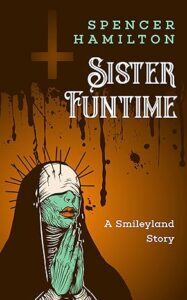
But also, my use of Catholicism in my stories is largely reactionary. I’m frankly sick of all the movies where priests and Christianity itself are portrayed as the heroes, the good force that fights evil, because it feels like a whole lot of propaganda. Over and over again, decade after decade, members of clergy—Catholic priests most famously, probably because of the sheer wealth and power of the Vatican—are the predators, not the saviors. I see the tides turning in storytelling—see it in movies like Spotlight or, in horror, Saint Maud—and that gives me hope. To answer your last question: I attack this problem in “The Overnight Forest” with such passion because of questions like this; because, to me, it shouldn’t be a question of why I’m passionate about it, but why so many people in this world would rather turn a blind eye.
6. Nature and Payback. Speaking of “The Overnight Forest,” the titular forest is an intervention in the Catholic Church’s business as usual—a possible judgment—and in “The Ones Who Watch,” owls might be part of what’s referred to at one point as “the judgment of hell.” Trees and birds—nature sits in judgment. Why does nature take on these roles in these stories? What do you see as the role of “nature” in your fiction more generally? Does a relationship, or lack of a relationship, with nature have to do with a person’s closeness to, or deservingness of, “hell?”
SH: Ooh, I love that connection that you’ve drawn here. On my part it wasn’t intentional, but if we’re speaking on a Freudian level here, maybe I’m drawn to nature in a similar way that I’m drawn to the cosmic. Human civilization, in many ways, acts like a parasite in nature. We’re killing this planet, ya know? I don’t consciously insert environmentalism into my writing, but it does make a kind of sense that nature should be the entity that doles out our judgment, yes?
7. Other Devourers. Judgment and payback motivate more than the non-human side of nature. “Momma’s Monster,” perhaps the most extreme story, follows a woman who hunts men she thinks of as monsters. “You Are Beneath It All” presents another fairly extreme take on a devouring vengeance. Your Story Notes mention a growing interest in the extreme. Do you expect your extremes to continue going hand in hand with representations of vengeance? Does the suggestion of just desserts mitigate the violence, make the gore more palatable? Why or why not?
SH: My “education” in the horror genre is ongoing. I’ve been delving more into extreme horror and splatterpunk recently. They’re far from my favorite thing in horror, but I think every subgenre has its own merits, so I do think I’ll dip my toe in more. A favorite theme of mine is that humans are the real monsters, and extreme horror is a great sandbox for variations on that theme. But to your point, I do think that giving a character a reason for the violence makes it more palatable. Empathy reaches out even to characters that have given up hope for their own redemption. And on a more philosophical level, I think some monsters benefit from the status quo, so there’s a certain level of justice in the victim refusing to play nice and instead going and settling their own score. Storytelling, in this and other ways, can be a form of radical protest.
8. Class and Other Promises. Two stories in the collection highlight issues related to socioeconomic class. In “The Ones Who Watch,” the main character sees most city inhabitants as members of a lesser species while he is “untouchable because of his bank account.” In “Evidence Locker VHS Tape #6,” the perspective character (“you”) is from a richer area than the other characters, which causes conflict. Why is there room in horror stories for reflections on class? Does a consistent vision or critique lie behind both stories? In both stories, how does socioeconomic standing relate to character psychology?
SH: To continue from my last answer, I believe storytelling and art in general to be intrinsically political. The best genres in speculative fiction for this kind of exploration, in my opinion, are science fiction and horror. There’s a bit of a renaissance of socioeconomic commentary in horror right now—the Purge movies, The Menu, Ready Or Not, Blink Twice, the list goes on and on. I think that’s just a response to the times we live in, where so many people are feeling disillusioned and betrayed by the system. Horror has always been the most current and responsive in this way. In the specific stories you mention, I don’t believe I intended a specific critique, and the main focus in both stories is elsewhere—but there’s that Freudian train again, driving my own inner thoughts on class and the haves and have-nots, tinting the lens with which I see the world and reflecting it in my writing.
In “The Ones Who Watch,” it lends Charles Acker a perceived bulletproof armor that is ultimately his undoing (judged so by nature, as you noted earlier); but in “Evidence Locker VHS Tape #6,” it makes Wills the outcast among kids he just wants to be accepted by—really, they’re all victims of the respective classes they were born into, the poor Witch’s Port kids and Wills, the privileged Queen’s Shore kid. The ending to “Evidence Locker VHS Tape #6” is bleak, but that was intentional, as I meant it as a reflection of certain harsh realities inherent in this kind of capitalist system.
9. (De)regulation. The story “Stomp” presents an almost ritualistic battle between sounds and rhythms, between the beeping of an alarm clock, a force aligned with domestic abuse, and the stomping of feet, which might be a march toward liberation. How does a clock become a force of violence and oppression? How does this battle of sounds and rhythms become a horror story? Trying to avoid spoilers, I’ll say that “Out of the Shadows, Into the Sun” also stages a kind of ritualistic struggle with oppression, combining the collection’s most overt treatment of queer characters with issues related to colonialism. What makes queer oppression and colonial oppression a good mix for horror? Why doesn’t the collection portray overtly queer characters and concerns more often, and do you intend to address more queer characters and concerns in future work?
SH: I don’t mean to harp on how all art is political, but … all art is political.
In “Stomp,” the oppressor is the patriarchy, specifically the labor of running a household that is expected of women, especially in older generations; this being expressed through the motif of blaring alarm clocks was my own invention—as a musician and former music teacher, I love using recurring motifs and sounds to show a character’s experience—but the rest was handled beautifully by that story’s co-author, Amy Rochester.
“Out of the Shadows, Into the Sun” was my first overtly queer story I sold to a publisher after I came out publicly. I had already written it as colonial oppression, which, just like many things we’ve talked about here, is a great source of commentary for horror, but after I came out, the publisher invited me to expand the story. Writing the queer oppression was, in a way, liberating for me, a sort of coming-out of its own. Much of my writing deals with queer themes—my novel The Fear most heavily by far, but also in Welcome to Smileyland and Sister Funtime, as well as my upcoming novel (another Witch’s Port story!) Winter’s Bite and the queer horror anthology I had the honor of editing, There’s More of Us Than You Know—and I plan to continue that for the rest of my career. But many of the stories in this collection and in Kitchen Sink were written in a time when I was still closeted.
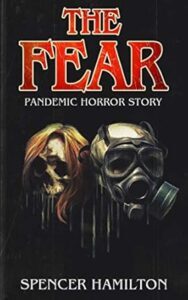
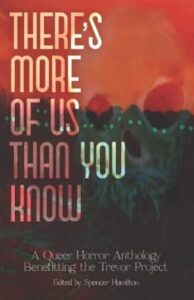
10. Access! How can readers learn more about you and your works (please provide any links you want to share)?
SH: Find me on Instagram! That’s where I’m most active, @spencer.hamilton.books. You can also keep up with my releases on Goodreads and Amazon, as well as my website spencerhamiltonbooks.com (which is under maintenance as of this writing but will be back soon) where you can sign up for my newsletter.
Thanks so much for these insightful questions and for your time, Andrew! What you do here is deeply appreciated, by me and indie horror authors everywhere.
About the Author
Spencer Hamilton is a queer horror author living in Philadelphia. His works include the short story collections Kitchen Sink and I Will Devour You and Other Promises, as well as his novel The Fear and novellas Welcome to Smileyland and Sister Funtime. His short fiction has appeared in anthologies from publishers such as DarkLit Press, Mad Axe Media, Pyke Publishing, Dark Pine Publishing, and more. He is the editor of the queer horror anthology There’s More of Us Than You Know.
The post Interview with Author Spencer Hamilton: I Will Devour You and Other Promises appeared first on L. Andrew Cooper's Horrific Scribblings.
September 11, 2024
Interview with Filmmaker Konstantinos Koutsoliotas, with Co-Creator Elizabeth E. Schuch: Minore
Minore is the delightfully offbeat horror-fantasy-comedy from Greece that won Best Horror Feature and Best Monster/Creature Visual Effects at the Miami International Science Fiction Film Festival earlier this year. In this interview, made possible by the film’s co-creator Elizabeth E. Schuch, director Konstantinos Koutsoliotas discusses the film’s inspiration and bizarre but effective combination of elements.
MinoreWhen mysterious creatures invade a Greek seaside port, a misfit band of musicians, tourists, bodybuilders, and grannies unite to save the city in this quirky action-comedy.
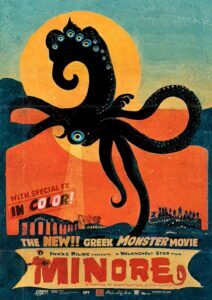 Click the pic for the trailer at Raven Banner Entertainment!The Interview
Click the pic for the trailer at Raven Banner Entertainment!The Interview1. The Lovecraftian. Even if your creepy-eyed old musician character, Mr. Nikodimos, didn’t ramble about the “Old Ones,” the design of your creatures would put Minore in the “Lovecraftian” category. Have you read much Lovecraft and/or other “cosmic horror” writers dealing with the Cthulhu mythos or similar types of dark fantasy world-building? If so, what are some of your favorites, and why? If not, why did you make a film that would fall into this category? What do you think keeps drawing viewers to Lovecraftian films? Is Lovecraftian fiction popular in Greece? Most Lovecraftian films have pretty bad creature effects, but yours are impressive. How did you pull that off?
KK: In my angsty teenage years, I discovered Lovecraft via E.A. Poe, and both writers still remain two of my favourites! I fell in love with Lovecraft while reading “Celephaïs” (which was my first animation film back in art school) and “The Tomb.” The idea of the outsider really appealed to me back then, and afterward I tried to read everything of his I could get my hands on. The fear of the unknown / the indescribable cosmic horror I think speaks to the very core of some of us! The flowery way he writes combined with the way he lets the imagination do all the work made a killer combination! Loved the stories so much to the point that all three of the films I directed I hope have some aspects of that DNA in them! And it’s more of a feeling I think–a feeling that exists maybe to various degrees in some of the other writers of cosmic horror. My absolute favourites of those others are “The House on the Borderland” by William Hope Hodgson, the uneasy feeling you get while reading “The Yellow Sign” by Chambers, and the unique melodic way Lord Dunsany writes! For those not exposed to those worlds and are keen to get infected with the virus, I would really recommend the podcast HP Podcraft https://www.hppodcraft.com/ by Chad Fifer and Chris Lackey. They have really deep dived into those worlds, and it’s a great intro to the genre!
Regarding the creature effects, we are blessed to have been working making VFX and monsters for the last 20 years but cursed to have had actually ZERO budget for the post in Minore. In Greece, unfortunately, this kind of film making is frowned upon by the establishment and the major critics, which means working with extremely limited budgets. So, we storyboarded everything and went in the shoot super prepared! It was literally editing it in camera because it was a very short shoot and adopting a B movie look that we could keep consistent throughout the film rather than going for something much higher quality that we would not be able to keep up. Then it was working 15 hour days for me and Elizabeth to pull it off in time for the deadline! The monsters are inspired by the Mediterranean “evil” eye with the addition of some tentacles, and the big mother is a version of HP’s Azathoth wrapped in Greek pita with extra tzatziki!
2. The Ever-Present End. An early shot in Minore shows a man wearing a sign that says, “Armageddon is coming,” and a creature invasion of the magnitude occurring could indeed herald the apocalypse. Do you consider Minore an apocalyptic film? Why or why not? Catastrophic, apocalyptic thinking, especially in the horror genre, surged around the turn of the century and then never went away, as the blockbuster A Quiet Place: Day One, another creature invasion film, demonstrates. Minore might seem close to that sort of film, but the poster, which I love, makes it look like a retro, 1950s sort of creature feature. Do you think it’s closer to the current or to the classic mold? Why?
KK: We tried to conform a bit to the classic 50’s monster mould. Part of it is our love for that era of movie making, and the other part is a fascination with the Fear of the Unknown, as I mentioned before. When Elizabeth and I were writing the film, the monsters were a metaphor for the economic crisis that Greece was in back then. Rows and rows of closed shops, businesses that went under, empty high streets, it seemed like it was the end times, in a way. By the time we found the minimum funding we needed to do the shoot, the economy was on the rise again, but then Covid was the new reality. Still, the fear of the unknown remained. That is what gave birth to Minore, really. When you have no control over your reality and the end looms near, what do you do?
3. Build Up, Part One. Even though ominous hints about what’s coming start immediately, the film devotes significant early time to building a large cast of characters involved in stories unrelated to invading creatures. Most creature features don’t emphasize character: why did you make character development a priority? What effect do you expect developing these plots for characters who all run into the main creature plot has on your viewers? Do you expect character injuries and deaths to be more shocking? Funnier? Either one, depending on who it is?
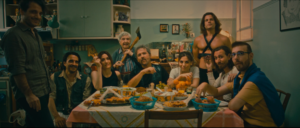
KK: In life we tend to care much more about what happens to people we know well, rather than a stranger’s plight you see in passing watching the news. Personally, I get turned off watching action sequence after action sequence if I don’t care about anybody in it. I feel it’s human nature. And there’s something magical getting to know the weirdest, unique side of each protagonist, while at the same time still trying to retain their individual humanity on screen. When you see how one of these characters interacts with the mundane, then introduce a tentacle into the mixture, it definitely makes it more fun! Love the films and stories that do that as well!! I mean, read pretty much anything from Stephen King and you are there. Films like Attack the Block, Grabbers, The Mist, The Fog, The Host–even Godzilla comes to mind– they are similar in genre and approach to what we trying to do! Also, we wanted to mirror a little the pace of life in the mediterranean–where even in an emergency things proceed at their own special speed.
4. Guys on Film. While many creature features please viewers with images of partially undressed women—even Alien (1979), hailed as feminist by some, shows Ripley running around in her underwear—Minore balances the score a bit with shirtless men, particularly a dancer and a sailor, who both get reactions from women that confirm their sex appeal, as well as a bodybuilder in love with his pecs, who may overestimate his attractions. Does the emphasis on male rather than female flesh make a statement? How does this sort of sex appeal add to the overall experience of the film? Have audiences reacted to it? If so, how?
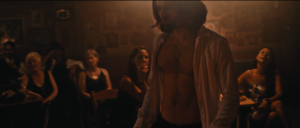
KK: It was obviously intentional. Greece is still pretty strong on Patriarchy and the teachings of the Orthodox church, so we tried to go a bit against the grain. We love to flip cinema tropes–and instead of a shirtless or near-naked female at every turn, we’ve provided man-flesh in the same way and had a blast doing it! For the most part, the audience seemed to have enjoyed and appreciated the gesture, and there was also a little bit of begrudging discomfort. Either you’ll enjoy it, laugh at the silly excess of it, or if someone’s uncomfortable with it… then it’s fun to ask why.
5. Build Up, Part Two. As I mentioned, hints of what’s to come begin with the film, and hints escalate to mysterious fog, strange dreams, and melty corpses, but although there’s something hard to identify in the water early on, the promised creatures don’t show up clearly until halfway through the film. How do you think this slow build toward the creature reveal—you might call it a “slow burn”—affects audiences?
KK: I think this is the most Lovecraftian element of this film. We had a limited shooting time and budget and needed to be as efficient with effects and monster visuals as possible. Using the Jaws method of showing less, to hopefully build up anticipation. The anticipation for me is better than the release and it gives the audience time to get to know the heroes of the story. Minore is really close to the film we had in our head in the first place! I’m not sure if you’ve ever tried to get anything done in Greece in a hurry, but there’s a certain lack of urgency and absurdity that we wanted to capture as well–would it really just come down to your granny sorting it out? Probably!
6. Randomness or Fate? Car accidents occur in two very different scenes. At first, they seem like random violence, but given their contexts—who gets hit, when, and what happens afterward—they might seem a little more like fate. Do you think Minore puts more stock in randomness or fate? Is William, the sailor who visits Athens while searching for his father, following a cosmic destiny? Is everyone?
KK: This is one of the questions I try to answer myself! Is there some order in the chaos? Who knows! Maybe! There’s something very fateful about being in the right place at the right time… or the wrong one! Tried to pass the Lovecraftian idea that you are inconsequential considering the size of the cosmos but then… when all things go to hell maybe the answer like in Zorba the Greek is to Dance! No fear, no hope–freedom as Nikos Kazantzakis says! Maybe there is some order in that! Maybe our dancing waiter Alexis has got all the answers in the universe!
7. Music. William, Mr. Nikodimos, and others play instruments, particularly the bouzouki, another character is a dancer, and another is a painter. Why is art so important to the film? Music ends up playing a critical role in the story, and it might have something to do with the “music of the spheres,” which Mr. Nikodimos mentions in one of his ramblings. What is “the music of the spheres,” and why is music—especially the bouzouki—so central to your story?
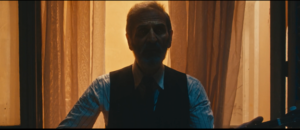
KK: I think it’s one of the ways to have true freedom in a way. To get lost in it. A safe place from the bad stuff Outside. A way to put order in the chaos, create a world that you are comfortable with! Lovecraft aficionados will probably spot a bit of the violinist from “The Music or Erich Zann” in the story, a lone man trying to keep order in the chaos by keeping the gate shut with his violin. But for me I grew up with this strange mixture of art and music. As a teen I used to read Lovecraft in the bus on the way to my art class, and once there, while drawing I heard a band of bouzouki players practising every day in the same space with us. Cosmic horror, art and music used to be a part of my everyday life growing up, so definitely it’s a bit personal as well! Also, someone had to be the first to combine Bouzouki with Lovecraft!
8. Build Up, Part Three. Just before the creatures reveal themselves to major characters (and the film’s audience), a shot from a creature’s perspective leads up to its attack, and a moment later, a reverse shot outside its perspective reveals it’s a floating eye with tentacles. Why did you decide to use the camera’s eye as the eye’s… eye? After this attack, the film changes. There’s faster action, lots more gore and slimy goo, and a lot more (sick) humor, such as using a fresh corpse’s intestine as a rope to climb to safety. After all the buildup, what do you think the sudden flurry of action and emotion does to your audience? Do you feel like the tone of the film shifts, or does it continue from what comes before?
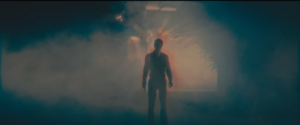
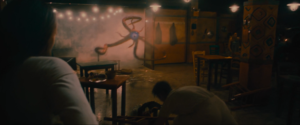
KK: That shot was a tip of the hat to Coppola’s shot in Dracula when the vampire approaches the mansion and of course the Evil Dead creature giving chase in the woods! Loved those films–and of course the things you love affect the way you shoot. There is definitely a shift in the film. I think the first big hint for me comes with Nikodimos’s accident; the over-the-top result and the fact that he goes out for a walk after that should be a hint that the film is now in B movie territory. But for sure we took a page out of Rodriguez’s From Dusk till Dawn playbook. We just wanted to have fun with it!
9. I Laughed at That. Although Lovecraftian writing is generally serious, Lovecraftian film often can’t resist humor. What made you decide to throw comedy into your action-horror-fantasy blend? Although quirky characters have funny bits throughout the film, the comedy comes faster after the creatures attack. Much of the humor goes hand in hand with gore, such as a head getting zapped to oblivion or a face getting ripped off with complete cleanness. Assuming I’m right… why is the gore funny? Why, when a guy’s face gets ripped off, am I snickering instead of scared? Why, assuming I’m right, do you want me to be snickering?
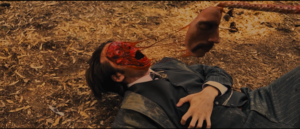
KK: We do! The world has been put through its paces with Covid and everything in the last couple of years; we just wanted to make something fun–that people hopefully leave the cinema having had a good time for an hour or two. And fun is definitely a form of release from the build up! Love fun gore, the OTT stuff–the likes of Peter Jackson’s Dead Alive (zombies meet lawnmower), Evil Dead, Army of Darkness, From Dusk till Dawn. Goes definitely more into the comedy rather than trying to be realistic. Like the gangster that is chasing after his skin, and being a bit upset because he lost… face.
In real life I would probably faint (like the typical Lovecraft character) if someone lost his face in front of me.
Life is absurd, and even in the worst times it can still be a comedy. We really wanted to embrace the chaotic joy of it all and take people on a silly but very Greek ride.
10. Access! How can readers learn more about you and your works (please provide any links you want to share)?
Our Company: Melancholy Star https://www.melancholystar.com/
Konstantinos Koutsoliotas’s website: https://www.konstantinoskoutsoliotas.com
Konstantinos Koutsoliotas on Instagram: https://www.instagram.com/melancholy_k
Elizabeth E. Schuch’s website: https://bio.site/elizabethschuch
Elizabeth E. Schuch on Instagram: https://www.instagram.com/elizabetheschuch
About the FilmmakersKonstantinos Koutsoliotas
Konstantinos Koutsoliotas is an award-winning VFX artist with over 15 years of experience in the industry. Currently he is working as a visual effects compositing supervisor at Herne Hill media in Toronto while at the same time moonlighting as a filmmaker with three award winning features under his belt and a two-part documentary that he co-directed with his partner Elizabeth E. Schuch.
Elizabeth E Schuch
Elizabeth E. Schuch is an award-winning filmmaker with a career spanning directing, storyboarding, design, VFX and indie feature production. Her award-winning directorial debut, The Book of Birdie, showcases her passion for female-driven genre filmmaking. Elizabeth co-directed the epic documentary God’s Soldiers: Siege of Malta and co-created the cult Greek monster movie Minore.
Beginning as a set designer, she won Chicago’s top award for theatre, participated in the Berlinale Talent Campus, and trained in VFX in the UK. Specialising in storyboards for VFX, Elizabeth works in a range of media: commercials, factual, TV, titles, graphics, IMAX, VR, live events, and features (including Wonder Woman.) Elizabeth is the lead producer at Melancholy Star studio in London, Greece and Toronto, and the art director for the celebrated Fantaspoa IFF in Brazil.
The post Interview with Filmmaker Konstantinos Koutsoliotas, with Co-Creator Elizabeth E. Schuch: Minore appeared first on L. Andrew Cooper's Horrific Scribblings.
September 4, 2024
Interview with Poet and Storyteller Grace R. Reynolds: Lady of the House and The Lies We Weave
Grace R. Reynolds is a superb spinner of verse, and here she reflects on the influences, inspirations, histories, and circumstances that help form the webs in her collections Lady of the House and The Lies We Weave.
Lady of the HouseLady of the House shares the fictional tale of Lady, a 1940s riveter turned housewife trapped by a loveless marriage and societal framework that make it difficult for her to abandon her current circumstances. She feels purposeless, hopeless, and she is angry. Resentful. And she festers…. This dark and haunted poetry collection is sure to please readers of the macabre.
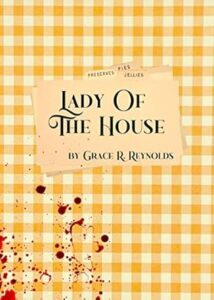 Click the pic for more on Amazon!
The Lies We Weave
Click the pic for more on Amazon!
The Lies We Weave
Planted ambitions. Wounds that never heal. Cycles of generational trauma that keep us from breaking free of our turmoil. Suffused with Gothic undertones, The Lies We Weave’s collection of dark poetry and prose is a journey of self-discovery that offers a unique perspective on one woman’s path toward healing. Beauty, darkness, pain, and hope can be found along the way as long as we allow ourselves to take those first steps into the unknown.
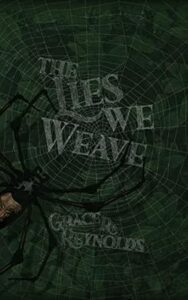 The Interview
The Interview1. Gothic Poetry. The descriptions (above) of Lady of the House and The Lies We Weave include “dark,” “haunted,” “macabre,” and finally the big-G “Gothic.” What earns your work all these descriptors, and what draws you to the dark side? Classic G is rich with images of festering and decay and filled with repressed longing (sometimes for violence)—do you consciously draw on this tradition, or do you get your macabre imagery elsewhere? Do you have any major Gothic/dark influences, poetry or prose? What kinds of darkness is poetry particularly useful for expressing? In either book, of what image or images are you proudest? You have a flair for synesthesia, such as “the grass smells / a particular shade of green” in “The Fresh Cut.” What draws you to this technique, often favored by the Romantics and others in the genealogy of Gothic poetry?
GRR: I enjoy the rich history of Gothic literature and its haunted hallways, and I mourn its broken heart like an unrequited lover staring out a castle turret pensively. It’s tragic, romantic, sad, and beautiful. I’ve been drawn to the genre for a long time, but funnily enough, I did not consciously draw on tradition when writing both Lady of the House and The Lies We Weave. Though they are both contemporary Gothic works, they employ different elements of the genre and evoke different feelings. Lady of the House falls somewhere in the Venn diagram of American Gothic, Suburban Gothic, and Neo-Feminist Gothic. The Lies We Weave explores common themes found in Neo-Feminist Gothic thought, particularly around women’s roles and expectations within family structures and how one might free oneself from fears and anxieties associated with that.
I find myself drawn to authors who write similar themes. Sylvia Plath was my first and still a favorite poet. I found her post-mortem collection, Ariel, in the high school library and found myself deeply attached to her work. I am also partial to famous Russian poets such as Sergei Yesenin and Anna Ahkmatova, a Lyricist and an Acmeist. Two very different styles, yet equally rich, dark, and expressive in their own ways. I enjoy how both Western poets such as Plath and Eastern European Poets like Yesenin and Ahkmatova can look at small moments in life and paint something utterly beautiful or terrible from them. However, Acmeists like Ahkmatova speak more plainly, which is not something you find too much of in either collection, as both are steeped in metaphor and analogy.
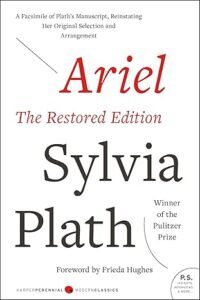
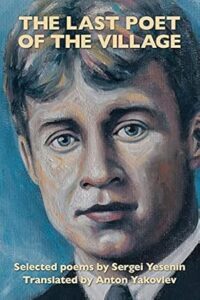
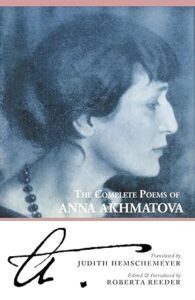
Apart from poets of the 19th and 20th centuries, I’ve come to enjoy Shirley Jackson as a more recent influence of mine. Perhaps I feel a sense of comradery while reading her work, as she and I share a few parallels in life, notably seeing the terrors hidden within the everyday mundane. Sometimes I feel like Constance Blackwood or Natalie Waite’s voices were inside my head all along.
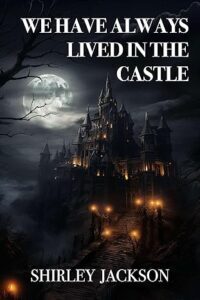
With respect to contemporary poetry, I’ve come to adore Ada Limón’s work. She is the 24th Poet Laureate of the United States, and I find her voice refreshing, authentic, and inspiring. I came to know her through her collections The Hurting Kind and The Carrying, which address existential questions of being connected to everything to hard topics to share such as struggles with fertility. She’s raw. She’s real.
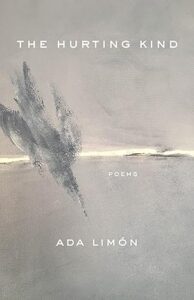
Going back to your question on favorite images produced in each collection, that’s a tough one! I suppose they would be based on my greatest fears manifested in both (though I am very partial to “Ambrosia” in Lady of the House). The opening poem in my freshman collection is still a favorite of mine because I relish the look on readers’ faces when faced with the imagery of Lady plunging her hand down the garbage disposal. It’s a very real fear and an intrusive thought of mine! In The Lies We Weave, my fears revolve around parenthood and doing right by my children. So, while not dark or terrifying by the horror reader’s measure, I’d say my favorite image rendered is the one made for “Where Fireflies Dance” because it acknowledges those fears as a parent but lets them go and ends on a hopeful note.
2. A Woman’s Voice I: Prisoners of Patriarchy. Thinking of the historical Gothic, I’d say Lady of the House is more G than The Lies We Weave. Though both books earn the G, the central image of a woman trapped by patriarchy in Lady has been crucial to the G since its origins in the imprisoned women of Ann Radcliffe and Mary Wollstonecraft (feminist mother of Mary Shelley), or, later, the famous “madwoman in the attic” of Charlotte Brontë’s Jane Eyre. Is Lady a paradigmatic victim of patriarchy for her times? What examples can you give of what her thoughts and desires reveal about her experience as a woman and the experiences of women in general, in the 1940s and beyond? You reflect on “The trauma of a life wasted / Built on a foundation of suburban lawns.” Would you call your writing here Feminist Suburban Gothic? Why or why not?
GRR: The Lady is a paradigmatic victim of her time; yes. You have to imagine in the 1940s, over 7 million women in the United States were in the workforce, a 6% jump in participation in labor from before the war. After victory day, less than 50% of women who were new hires for jobs were let go from their positions, and the effects only continued to ripple. It was as if there was a crisis of gender roles in this country where women continued to be pushed back into traditional gender roles. The pendulum swung hard to the other side, and unfortunately, we see similar behavior happening today in the aftermath of COVID. Since 2020, it’s estimated that about 2 million women have left the traditional workforce, myself included, to take on a caretaker role for children, parents, or another family member in the home.
For women who found a greater sense of purpose outside the role of caretaker or homemaker, this would have felt incredibly isolating. The birth population skyrocketed in an era when married women had very little, if any, control over their fertility. The physical labor of being a caretaker and a homemaker takes its toll, and in the 1940s and 1950s, when housewives complained, they were diagnosed with ‘angry woman syndrome’ and overmedicated as a result.
The Lady is a privileged and disenfranchised paradox as a disgruntled homemaker in this era. I think there are elements of Suburban Gothic present in Lady of the House, but Feminist Gothic is more apparent with themes of domesticity, entrapment, and sexuality, and the question of identity is at the forefront.
3. Recipes for Violence. One of the oddest and most appealing elements in Lady of the House is the inclusion of poems that start with recipes, some of which seem like mere recipes, some of which have some special details. Where is the poetry in a recipe? How, especially in Lady’s era, did/do recipes relate to women’s family and community relationships? What might someone gain from a life filled with recipes? What might someone lose? Why do the details unrelated to typical cooking find their way in? The poem “Ambrosia” includes a detail about eyes that the woman in the poem wishes were her husband’s, one of many anti-husband fantasies, which is probably why your husband asked you to mention that he’s alive in the Acknowledgements. Larger issues of patriarchy aside, what fuels the anti-husband resentment and rage in your writing?
GRR: On the subject of the disenfranchised, let’s talk about witches… recipes are the kitchen witch’s spells. She bakes and brews her heart’s delights or malicious intent, so who’s to say why some of Lady’s unique ‘recipes’ wouldn’t have some interesting details in them? Recipes, like spells, can be passed down the generations, and with them come tales of joy, sorrow, wisdom, and power. As someone who values family history, that sort of loss would be extraordinary.
Every family has one or two recipes or has a family member with a recipe that omits one or two ingredients. “Secret ingredients” or, if you’re lucky and somehow get your hands on a copy of the recipe, those extra ingredients change each time. The unrelated details are a nod to that, but on a more serious note, a nod to the deteriorating mental state of the Lady.
I enjoy the aesthetic of the post-World War II era. It’s beautiful, but it’s important to note that it was a veneer for many. The ‘Mad Housewife’ trope emerges, and horror legends like Ira Levin notably capitalize on these terrors. I wanted to examine that from my own perspective as a woman. Why’d she go mad in the first place? Let’s get into the thick of it, reclaim the trope, and give her a sense of dignity and an ending she deserves instead of making fun of her.
4. Trauma I: Bad Breaks. In Lady of the House, you mention trauma directly both in the Introduction and in the poetry. What, in general, does this book say about trauma, and what traumas in particular do you evoke and examine? Loss of self, or the smothering of self, seems to be a specific concern. Where do these emotions originate, and what happens when they fester? In “Groundswell,” the poem’s perspective character repeatedly thinks, “‘I am broken.’” Are people breakable? If so, what breaks them? If not, why do people often feel broken? Can people who are broken, or feel broken, be fixed?
GRR: There are several variables to the Lady’s existence. I don’t say where she lives or what she looks like, but the reader knows she lives in the suburbs. From that, they can assume her household’s socioeconomic status, relative location to a metropolis, access to hiring opportunities, etc. In Lady’s case, the circumstances that entrap her are financial and marital. She is only economically secure so long as she stays in her marriage because divorce was, and still is, governed by the state. It wasn’t until the 1970s that all states even allowed couples to petition ‘no-fault’ divorces, so one party would have to gather evidence that another was at fault. For someone like Lady, that would have been incredibly difficult to do. And while there was no law that outright said a woman was required to obtain permission from her husband to seek employment outside the home, there was nothing stopping a husband from intervening with said prospective employer. Businesses were free to discriminate against the female sex for hiring practices until the Civil Rights Act of 1964. But I digress— A person can feel broken, break, or be fixed through therapeutic measures or something else.
5. Form I: Sound. In Lady of the House, you use rhyme a great deal more than you do in The Lies We Weave. What do you like about rhyme, particularly the closing couplet? For example, two closing couplets, almost like bookends, rhyme “bloom” with “groom;” the first “bloom” is the bloom of resentment, and the second is the bloom of the groom’s spurting blood. What effect do you hope this repetition of sounds and associated images and concepts achieves? Why do you back away from such techniques in The Lies We Weave? You tend to use forms of your own—what don’t you like about rhyme, or traditional poetic forms that involve regular sound repetitions? How much emphasis do you place on meter?
GRR: Meter is essential, but I do not follow traditional poetic form if that is what you are asking. Contemporary poetry does not follow a predetermined meter or rhyme scheme. Lady of the House does include a great deal of rhyme! I wanted to stick with that “tongue in cheek” feel in the collection and stay with a lyricist mindset, apart from the concrete poems of the Lady’s internal monologue in “Nickel Finish” and “Nightmare.” Even with the gory imagery, the use of a rhyme scheme makes the poetry fun! How can you not love the imagery of a glass of tea juxtaposed with the Man of the House’s foot severed off in the front lawn under the push mower in “Lemon Wedge & Sun Tea?”
In The Lies We Weave, I wanted to experiment with free-form poetry and create a cohesive collection that honored older poems I had drafted, like “In The Full Bloom,” with newer ones. Thinking back on it now, I suppose that poem is the cornerstone of the entire collection. I did not intend to write a book of poetry about motherhood or trauma, but somehow, the pieces came together. Huh. How about that?
6. Form II: Shape. In both Lady of the House and The Lies We Weave, but I think more strikingly in The Lies We Weave, you include poems with concrete forms, which is to say the words are positioned on the page in ways that form visual images (though the images themselves are fairly abstract). How do you know when the words of a poem need to form a visual image? A pattern repeats—narrow at the top, wide about a third of the way down, narrow half to two-thirds of the way down, wide again at bottom. Do you have specific pictures, feelings, or ideas that you want readers to take from such images? Words and phrases also tend to drift from the left side of the page to the right. How should readers respond to the verbal drifts?
GRR: Words have weight, emotional weight. When creating an abstract form, the line break matters to me. In “Dimensions of Truth,” I let the words drift, allowing the reader to slow down as they approach the edge of the stanza. I’m not saying my way is right or wrong, but it is my intention. Perhaps that is what I enjoyed most about crafting this collection.
7. The Void. Speaking of drift, The Lies We Weave begins with “Dimensions of Truth,” a poem in which the speaker’s spirit seems to drift through the universe until being swallowed by the void. Voids, chasms, abysms, the abyss… they come up a few times in this collection. Why? What is the Void? What are its attractions? What are its horrors? What is your relationship with it?
GRR: The void makes one or two sneaky appearances in Lady of the House, too, if I remember correctly. Your guess may be as good as mine, as I am still searching for this answer! ‘The Void’ is a concept I am called to quite often in my work, mainly when writing poetry. So much of my writing up to date has centered ugly feelings that feel all consuming–perhaps emptying them into a void is what I really want. To just turn off all the noise. That sounds rather bleak, doesn’t it? Or rather, cathartic, perhaps? Yet, I can’t help but equate it with the idea of ‘peace.’
8. A Woman’s Voice II: Equivocal Tongues. The second poem in The Lies We Weave, “The Weaver,” includes one of my favorite images from either book, a spider laying eggs in the speaker’s mouth. It ends with the lines, “I must be careful not to disturb them / with my tongue.” Since the title associates weaving with lies, the mouth and the tongue, and by extension the voice, seem to have a different relationship with repression and freedom in this book. They’re more ambivalent, as the mouth is equipped to weave lies, lies that could support or undermine survival if the tongue allows them. In this collection, what is the significance of weaving lies, especially for women? Your Introduction casts lies in a negative light, but I’m not sure about the rest of the book. Are lies ever necessary or productive? What is the status of lying in a life where truth itself is elusive?
GRR: I love these questions; thank you for asking them. The symbol of the spider is significant, not just for the collection, but to me! Spiders represent the divine feminine, as they are the architects of life. There is a duality to their nature, creating beautiful one-of-a-kind webs that cannot be recreated in one moment to attack an unsuspecting moth and the next to liquefy its insides. Women are spoon-fed lies from an early age, so it’s hard to know where they begin and where they end. In the movie Barbie, America Ferrera’s character, Gloria, tells a fantastic monologue about the impossible standards women and girls should fulfill. This mentality is harmful to young women and carries into adulthood.
This world is violent and uncertain. It’s a wonder we all get out of bed in the morning every day! Think about the little lies, or rather, the omissions you allow yourself throughout the day. What news articles do you intentionally skip because the truth is too hard to face? What text message are you ignoring right now because you told yourself you’ll get back to it but never will because a little voice in your head says it’s easier not to—I’m rambling there, but what I want to illustrate is the brain’s methodology of using omissions, or lies, as a multifaceted means to avoid confrontation of anything negative because it is in direct conflict with our survival (at least in a contemporary setting in a world of screens). And if that is the case, what is the status of truth in a world where lies are more concrete, foundational even?
9. Trauma II: Generational Contagion. The Lies We Weave follows several themes, but a major arc moves from poems with speakers reflecting on traumas handed down from their mothers to poems with speakers reflecting on their anxiety about handing down traumas to their daughters. Is trauma contagious? Hereditary? Matrilineal? Is trauma, the realm of the wound, more feminine than masculine? Why or why not? Does family psychology more or less guarantee the sharing of traumas? Why or why not? How much does the generational transmission of trauma that you describe have to do with the “Preference for Hurt” that doesn’t just come up in the poem of that name?
GRR: I believe trauma is hereditary but not exclusive to matrilineal lineage. I’ve never thought about the realm of the wound being more feminine or masculine, but I think it is more commonly associated with the feminine. This is most likely due to the roles often associated with femininity, with motherhood at the forefront. The role of caretakers, not specifically mothers, is another. Regardless of gender, unresolved trauma is a wound that festers and rears its ugliness on those we love most. Like a blade, it burrows deeper into the soul of a family with every passing generation. As parents, it’s our job to recognize how and where familial trauma manifests for ourselves so we, in turn, don’t project or expose our own children to that.
10. Access! How can readers learn more about you and your works (please provide any links you want to share)?
GRR: Readers can connect with me on social media on Instagram, X (formerly known as Twitter) or Threads under the handle @spillinggrace, or visit my website www.spillinggrace.com
About the Author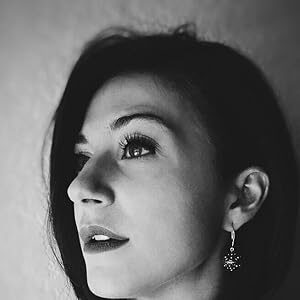
Grace R. Reynolds is a native of southern New Jersey, where she was first introduced to the eerie and strange thanks to local urban legends of a devil creeping through the Pine Barrens. Since then, her curiosity with things that go bump in the night bloomed into creative expression as a dark poet, horror, and thriller fiction writer. Her short fiction and poetry have been published by various presses. She is the author of two poetry collections from Curious Corvid Publishing, Lady of the House (2022) and The Lies We Weave (2023). Connect with her on Instagram, Threads, and X @spillinggrace
The post Interview with Poet and Storyteller Grace R. Reynolds: Lady of the House and The Lies We Weave appeared first on L. Andrew Cooper's Horrific Scribblings.
August 7, 2024
Interview with Author Michelle von Eschen: Motel Styx and Old Farmhouses of the North
An accomplished horror author with literary and transgressive edges, Michelle von Eschen discusses her new collaboration Motel Styx and her recent story collection Old Farmhouses of the North.
Motel Styx (with Jonathan Butcher)Tucked away in the Chihuahuan Desert lies a motel unlike any other …
Fueled by online trends, a shift in the American zeitgeist has led to the instatement of the Lazarus Act, legalizing the “recreational use” of human corpses.
Ellis Mercer, recently bereaved, embarks on a secret mission to America’s first “necrotel” to recover his wife’s remains before her corpse and his memory of her are desecrated by the motel’s twisted membership.
As he uncovers the murky inner workings of Motel Styx, evading its suspicious staff and encountering a wild array of death-obsessed guests, he will be forced to face an unsettling truth: there is more than one way to define love.
Motel Styx is an explicit, disturbing, witty tale about lust, loss, and the last taboo.
Old Farmhouses of the NorthBeyond the borders of a barely civilized and struggling population, the barren fields of the North stretch into oblivion. Old, abandoned farmhouses, crumbling in a million tiny ways, stand on silent watch over the emptiness.
Old Farmhouses of the North features ten tales of quiet, literary horror exploring the predators and plagues of the human condition. Called “darkly poetic,” “haunting,” “emotionally crushing,” “enthralling,” and “stellar” by readers.
Spend a dark night in a pumpkin patch in “Noche Oscura,” search for a different kind of buried treasure with “Butcher and Shaw,” expect the unexpected in “What to Expect When You’re Expecting,” enter if you dare “The Bug House” … all of this and more from the bleak yet beautiful landscape of Michelle von Eschen’s mind.
The InterviewMotel Styx
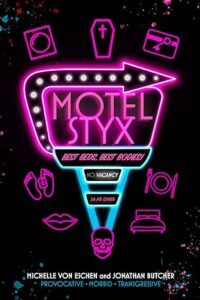 Click the pic for more on Amazon!
Click the pic for more on Amazon!1. Normalized Degeneracy. The world of Motel Styx has at least partially abandoned the taboo against necrophilia, but with constraints—consent, for example, is still important, and necrophiles are still supposed to respect the taboo against cannibalism. Why, in your fictional world’s logic, has the taboo against necrophilia started to fall? In the real world, assuming matters related to health and hygiene could be handled, should we have a taboo against necrophilia? Why or why not? If the taboo against necrophilia is a disposable construct, what about others, such as taboos against (again) cannibalizing the dead and against incest—could they be disposable, too? Why or why not?
MvE: In this world Jonathan and I created, which references at least one occurrence in another author’s work related to the criminal acts of necrophiles, an understanding is reached at a federal level that will reduce crimes against the dead by allowing for necrophilia in a controlled environment. This is much like legalising weed and taxing it. Safe access and monetisation is a win-win for all involved. I think in the real world we shouldn’t have a taboo against necrophilia anymore because we understand so much more about death and disease than we did in ancient times. We are also not governed by religion (which has larger groups objecting to sex with the dead), so concerns about afterlife and such shouldn’t hold weight. If you don’t agree with necrophilia, don’t do it! What is between two consenting adults should be fine as long as no one is hurt. Both cannibalism and incest can have pretty unwanted consequences. Prion diseases with cannibalism and birth defects with incest. One could argue that diseases can be contracted with a rotting body, and I think that would be a good argument for maintaining programs around necrophilia rather than a law that just legalises it.
2. The Zealots. A crowd of protestors—identified variously as Christian zealots, freaks, and hypocrites—stays near Motel Styx, decrying what goes on inside and waving around posters about the horrors of necrophilia. Do you intend the opposition to the “necrotel” to seem like idiots? Why or why not? To me, they seem a lot like extremists who protest outside clinics that perform abortions and harass women as they go inside. Do you intend a parallel with extreme anti-abortionists? Whether or not you do, what would such a parallel add to the story? How might a necrotel be like a clinic that performs abortions?
MvE: I certainly never intended to make them look like idiots. They are viewed through the eyes of people who look down on them and are, therefore, described in ways less than desirable. I can absolutely see the parallel between protestors outside Motel Styx and those outside abortion clinics, purely because the root of the protests stems from religious conviction and the activities of those using services at both locations are in direct conflict with religious tenets. Both types of protest seek to not only send a message, but to disrupt business operations.
3. “A type of torture where the victims don’t scream.” Some visitors at the Motel Styx find one attraction of sex and other activities with the dead to be the interaction with a human body that doesn’t talk back, resist, fight, or do anything but submit. They can treat corpses like the objects they fantasize other people, especially women, could be for them. To what extent does Motel Styx use necrophilia to reflect on pathological relationships between (or among) the living? Not to yuk anybody’s yum, but what kind of person wants to have sex with someone completely submissive, completely objectified, even to the point of unconsciousness and immobility?
MvE: One of the things I aimed to explore in Motel Styx is the motel as a microcosm. Many of the predilections we find in the larger population have their place within the walls. This includes interpersonal relationships and sexual tastes. Jonathan and I also mention the aspects of control and domination, which are common reasons why people are attracted to necrophilia. In relationships with the living, those with these types of tendencies don’t fare as well because, as you mentioned, they can be rejected, fought against, and denied. These same people might turn to rape as a way to both exert power and to achieve sexual pleasure. They might use Rohypnol to incapacitate. In Motel Styx, so-called body donors give lasting consent and allow a legal outlet for what would be otherwise cruel behavior. It’s difficult to get into the mindset of someone who would want this type of access to a body, but that doesn’t make it any less of a real thing. Statistical data are inaccurate because many who feel these urges are not open about it due to taboo and legalities.
4. Love is Strong as Death. As I mentioned during our correspondence, my favorite characters are probably Linette and Alfred, a mixed couple, one living and one dead, who stay at the Motel Styx. They’re gross, but they’re also kind of cute. Also sad. Linette has trouble letting go; so does Ellis, your main character. What does Motel Styx say about grief, and what inspired you to express ideas about grief in such a macabre fashion? For that matter, as Linette and Alfred may be a spot of true love in the middle of lots of death, what does Motel Styx say about love?
MvE: I’ve lost both of my parents, many extended family, and quite a few friends. Everything I write is about death, and many of my stories were born out of loss. Death is also something I fear, which is a common fear, and so I suppose exploring it through story helps take away some of that power. Over the years and the losses, I’ve been able to process my grief through fiction. As for love, it can be just as complicated as death. Just as we all grieve differently, so do we love. Linette’s and Alfred’s story was important to include in order to highlight that necrophilia, like love in general, takes many shapes. Those with this paraphilia aren’t all grave-robbing, sex-obsessed, perverted people. Sometimes all one needs is a quiet room with two chairs, one for them and one for their true love. It’s enough for her to be in the same place as someone who she feels represents something she lost, but wasn’t ready to let go of. I think it is one of the hardest things about life, loving mortal beings.
Old Farmhouses of the North
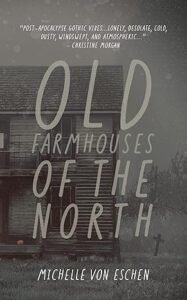
5. Housing Ideas. Old Farmhouses of the North is a well-designed collection, with stories that relate to each other plot-wise and, more often, thematically, and with farmhouses in a somewhat ambiguous North providing ominous locations throughout. What drew you to these decaying farmhouses in an imposing, infertile landscape for your diverse tales? The stories provide some details about where the “North” is, but how would you describe your “North,” its atmosphere and its people? How much, if it all, did you plan the collection before you wrote the stories? How did your old farmhouses come together?
MvE: I’m terrible at planning when it comes to my books. Things tend to take shape more organically, and it was no different for this collection. My mom was always pointing out windswept barns and old farmhouses, so maybe I’ve always been looking at them on family road trips when I was young and continuing to do so when taking her to medical appointments before she passed when I was in my late thirties. I like to think about a life the buildings once had, better paint, comings and goings, true purpose and warmth. To see them forgotten and abandoned, crumbling into the landscape, it all feels quite hopeless and temporary. They are the perfect backdrop for my bleak writing and the desolate atmospheres the stories evoke. I think I had several stories written before I realised they had somewhat of a common theme. I can’t remember how I came up with the title. If I had to choose on the map where ‘my North’ is, I’d say it is probably North Dakota. The people in my North are rugged, but weary, having experienced far more in each of their lives than any one person should.
6. Quiet Extremes? The blurb about this book (above) and your bio (below) describe what you do as “quiet, literary horror.” You do have a refined style that doesn’t emphasize chaotic screams and splatter, but at the same time, Old Farmhouses does go to extremes that make your work in Motel Styx not entirely surprising. In fact, Old Farmhouses, without sensationalism, includes necrophilia. Are “quiet, literary” and “extreme” mutually exclusive? How would you feel about expanding your label: “quiet, literary, extreme horror?” The bugs in “The Bug House” and the burns in “Firesick” get pretty nasty. How do you feel about writing the nasty bits, and do you see yourself going that far, or possibly farther, in future work?
MvE: My ideas do tend to be quite dark, but I don’t elaborate much when it comes to gore or violence (except in Motel Styx). I try to focus on the language and emotion behind horrible acts or events and how they impact people psychologically more so than physically. My husband writes extreme horror, and I think the word ‘extreme’ might give readers of my quieter work the wrong expectation. They won’t find what they are looking for. I do think I will revisit the more extreme side of the genre. I already have another idea that has some serious potential, and it will likely end up being a collaboration as well. I’m not sure if I’ll ever write anything more extreme with just my name on the cover.
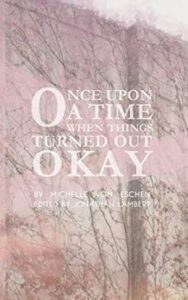 More quiet horrors…
More quiet horrors…
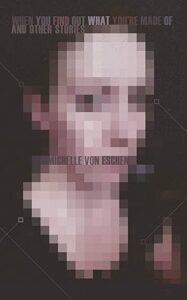 …click the pics
…click the pics7. Lyrically Present. In this collection, at least, you seem committed to present tense, first person narration. Why are you and other contemporary writers choosing the present tense—what does it offer writers and readers that more conventional, past tense narration doesn’t? Why might it be particularly good for horror? What about first person (which has deeper horror roots, Poe and such)—why do you choose it? How far “into character” do you get to produce your first-person perspectives? Which character from an Old Farmhouses story was hardest for you to write? Why?
MvE: First person, present tense feels most intimate to me and, in my opinion, is the best vehicle to convey emotion. The reader gets to walk in the shoes of the main character and experience their trauma in real time. I want readers to hurt a bit and to fear what is unfolding around them, but not to them. Honestly, I need to improve my characterisations and get to know the people I create much better than I do. I feel like it is one of my weaker points that I’ve only been able to know I need to improve based on feedback in earlier reviews and from my husband. He sees right through my use of characters as ciphers. I’m constantly trying to build better characters with backstory and depth. The most difficult character to write in Old Farmhouses was the main character in the opening story. He’s a villain and at that point in time I hadn’t written many.
8. Inside Out. Pregnancy and having children are significant issues in several stories, most obviously “What to Expect When You’re Expecting” but also “Butcher and Shaw,” “Clove Hitch,” and “Nancy Gone Wild.” “What to Expect” gets going like a riff on The Midwich Cuckoos (1957)—intentional?—but becomes exponentially nastier, “Butcher and Shaw” gets Satan involved, “Clove Hitch” presents a world where overpopulation makes reproduction a problem, and in “Nancy Goes Wild,” people attribute a young woman’s radical changes in behavior and appearance to pregnancy. Why do you address reproduction in these stories, and why does it so often appear in negative ways?
MvE: In the years prior to writing Old Farmhouses of the North, I underwent four major surgeries due to endometriosis. The disease makes uterine tissue grow elsewhere in the body, outside of the uterus, causing extreme pain, bloating, and other symptoms. 1 in 10 women have endometriosis, and medical science still does not understand what causes it. I lost an ovary and fallopian tube to scar adhesions after a cyst was removed from that same ovary. The right side of my abdominal cavity is a bed of scar tissue that still causes me pain. I don’t think I am able to have children due to the devastated landscape that is my insides. This might be why I write so much around pregnancy and reproductive trauma. It just makes sense as well that I would write so much about life-giving processes when I write so much about death. They are intimately connected and the end caps of our experience.
9. Delightfully WTF. Two stories are so delightfully strange that I want to give them special attention. Although surreal moments pop up throughout the collection, the best way I can think to classify “Noche Oscura” and “Because Father is Dying” is surrealist. Do you agree? Why or why not? “Noche Oscura” presents someone escaping a bad marriage and family pressures only to end up in a pumpkin patch, questing for his own proper pumpkin… what would you say this story is about? Would you call it allegorical? Why or why not? Why do you use an epigraph from Carl Jung? “Because Father is Dying” presents a family moving its members, including its dead, to a new house. What would say this one’s about, and would you call it allegorical? It strikes me as a childlike (but very disturbing) vision of the dead, death, and dying—were you going for that sort of perspective, or is the vision rooted elsewhere?
MvE: “Noche Oscura”was meant to be surreal. The ‘dark night of the soul’ is about confrontation of one’s self and the things that trouble us. I wanted to explore a man running from his troubles straight into them in an almost macabre funhouse presentation. It’s very much a reflection on purpose and on driving one’s own story, forming a life that one can be proud of, one not based on other’s expectations. To find your pumpkin is to find the way you want to spend your time on this planet. Carl Jung’s quote about the danger of the descent felt fitting in that there is no reward without risk. The end of the quote, which I didn’t include, notes that every descent is followed by an ascent. Truly, the only way out is through. I don’t see “Because Father is Dying” as allegorical. One day my twin sister pondered ‘what if we had to bury our own dead in our yards?’ and that got me thinking what would then happen when the number of dead needing a grave outnumbered the size of the yard. Well, you’d have to move to a house with a bigger yard! Just like when a baby is born and the family now needs an additional room in the house, as the dead increase, so does the need for more acreage. This story was me having fun fully considering a unique thought and also getting the chance to make a skeleton parade. 
10. Access! How can readers learn more about you and your works (please provide any links you want to share)?
Website: https://www.whenthedead.com/
Goodreads: https://www.goodreads.com/author/show/18935572.Michelle_von_Eschen
Tiktok: https://www.tiktok.com/@yourquiethorror_
IG: https://www.instagram.com/yourquiethorror/
About the Author
Michelle von Eschen (early works written as Michelle Kilmer) is an American author of quiet, literary horror. She is a lover of the macabre who prefers Earl Grey tea, October, people who say goodbye on the phone, and her dreams are so real she can’t figure out what has really happened to her. When she isn’t writing, she enjoys weightlifting, dark beer, web design, singing and playing guitar, and watching horror movies. She lives in the southwest of England with her husband, horror author Jonathan Butcher.
The post Interview with Author Michelle von Eschen: Motel Styx and Old Farmhouses of the North appeared first on L. Andrew Cooper's Horrific Scribblings.
July 31, 2024
Interview with Author Jeremy Megargee: Crown of Carrion and Soulmates
Jeremy Megargee displays serious storytelling skills in his forthcoming, very different novellas Crown of Carrion and Soulmates, into the depths of which we dive here.
Crown of Carrion“A brutal novella involving werewolves, cannibalism, and zealotry.”
There’s a homestead deep in the mountains called Merkel Valley, and werewolves den there. They’re a peaceful clan, focused on hunting game animals and preserving the traditions of Mother Moon from one generation to the next.
But there’s unrest in the pack, and it comes in the form of a rogue wolf named Merrill Sade. He was banished long ago from Merkel Valley, but he has made his mark in the cities below with tooth and claw. He is a zealot obsessed with stories about an old feral god lost to time, and he has assembled a ragtag band of cannibals to serve at his heel. Merrill’s thoughts are rabid, and he has no qualms about wetting his fangs with innocent blood.
He seeks the remnants of a powerful relic known as the Crown of Carrion, and if found, they open a doorway to a ravenous force that howls across space and time. All that stands against him is his former lover Ivy and a few brave wolves from Merkel Valley that are willing to take a stand against Merrill’s unrepentant bloodshed.
Will peace prevail in Merkel Valley, or will Merrill and his cannibals feast on this world until nothing is left but gristle and dust?
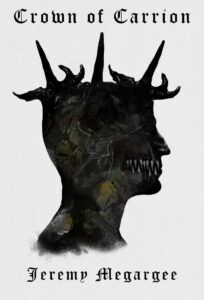 Coming in October 2024 from Curious Corvid Publishing!
Soulmates
Coming in October 2024 from Curious Corvid Publishing!
Soulmates
“An intensely dark and toxic love story involving two lost souls finding one another in cyberspace.”
A tale that focuses on toxic love, mental illness, and the dangers of connections born in the most obscure corners of the internet.
Coming in November 2024!
The Interview1. No Werewolf Dracula. I’m aware of werewolf fiction going back to the nineteenth century, and of course werewolves in legend and lore go back much, much further, but—unless you’re with Stephen King in thinking Stevenson’s Strange Case of Dr. Jekyll and Mr. Hyde (1886) is a werewolf story—literature has yet to give us a werewolf paragon comparable to the vampires’ Dracula (from the eponymous novel, 1897). Why do lycanthropes lack a spokeswolf? Would you nominate your rogue wolf Merrill Sade for the position? Why or why not? As monsters go, Merrill is more like Frankenstein’s Creature than Dracula because you give him a history of rejection and alienation. Do you want readers to sympathize with Merrill? Why or why not?
JM: I think it can be difficult to elevate a werewolf to that Dracula level because in essence, a werewolf is defined by duality. It’s almost like you’re dealing with two characters in one body. But that’s what has always made me gravitate in the direction of lycanthropes. They are flawed, they are at war with themselves, and at times there is a feeling of shame associated with their bestial nature. There’s something painfully human about that, isn’t there?
I’d love to see Merrill Sade claim that role in fiction, as a werewolf mainstay. He has accepted the animal that is inside of him. He clings to it. There is no shame in being what he is. I think in essence, Merrill tried and failed to be a person. All that remains is animal, and he finds pride and comfort in that.
And when it comes to Merrill being a sympathetic character, that is my sincere hope when readers dive into Crown. I want readers to see his pain, and perhaps relate to it. I gave him a history of rejection and alienation because, as the old adage goes, write what you know. I believe in leaning into vulnerability, and my own past is a crucible of childhood trauma. When you grow up a certain way, contending with emotional neglect, constant abuse, and a home environment that is the opposite of safe, it fundamentally changes how your brain perceives the world. It teaches you to distrust. It convinces you that happiness is not meant for you. When you encounter secure love, you can look and you can yearn, but it’s impossible to understand. It’s like feeling a soft touch when all you’ve ever known is teeth breaking your skin.
My own baseline is the expectation of rejection and alienation every single day of my life. Through therapy and taking ownership of my own mental health, I know that’s a completely false expectation. There is endless good in the world, and I’ve seen it. But that doesn’t change the foundation you were given in those pivotal moments of childhood that mattered the most. You expect the worst outcome. You anticipate the dark days. You taste pessimism because it’s familiar to your tongue. You must fight endlessly just to remind yourself that you deserve happiness, or love, or acceptance, just as every person on the planet does. That battle can make you weary sometimes.
I tried to imbue Merrill with all of those characteristics. He has been abandoned over and over. The people he always needed to show up for him never did. It has distorted his existence in some lasting way. He craves community, so he surrounds himself with shattered undesirables. He craves romantic love but cannot fathom how to maintain it. He makes bad decision after bad decision, and he never even sees that his path leads only to ruin.
He’s meant to be a character draped in tragedy.
2. The heroic she-wolf. Though werewolf literary standouts have been few, the lycanthrope has done much better in film, from The Wolf Man (1941) to An American Werewolf in London (1981) to the Underworld series (2003 – 2016?). A common feature of these films is male wolf leads: while notable she-wolves have appeared, making Ivy, a female, the leader in the force standing against Merrill is an unusual move. Why choose as she-wolf as your main protagonist? How would you describe her character? Will readers identify with her even though she’s technically a monster?
JM: I think that Ivy as a character is the total opposite of Merrill. Ivy is peace. Ivy nourishes herself and those close to her. She is quiet strength from beginning to end. When the novella starts, a heavy burden falls on her shoulders. She doesn’t shy away from it or shrug it off. She leans into the difficulty because she knows it will bring closure and comfort to a community that means everything to her. She has the makings of a leader even though she never asks for that role to be thrust upon her.
I think readers will see that her intentions come from a good place. She wants to protect, and she risks it all to do so.
3. Genre Transformations. There’s no denying readers get a heavy dose of horror with Crown of Carrion: people and werewolves tear apart, and often eat, other people and werewolves with alarming frequency. The book’s description uses the word “brutal.” Why the brutality? Though I don’t usually think of stories about classic creatures in this category, do you consider this book to be “extreme” or “hardcore” horror? Why or why not? Your story also has roots in fantasy/adventure. At the beginning, Ivy forms her party to go on a quest to confront Merrill, Merrill himself is on a quest to put together an ancient artifact, everyone’s on a difficult journey, etc. Why do you think you were drawn to these fantasy tropes? What influenced your genre blend? Might you have been influenced by role playing games—of the tabletop or video variety?
JM: I think the beautiful thing about literature today is that we are encouraged to experiment and navigate entirely new pathways. Blending genres so that the subject matter isn’t so easily defined. Crown has elements of extreme horror, some scenes of gore that will satiate anyone with a healthy literary bloodlust. But as you mentioned, there is also adventure, and questing, and two opposing forces that are destined to meet. And I think if anything in particular might have influenced those aspects of Crown, it would probably be the works of Jack London.
I grew up reading his novels and short stories, and I loved them. Stories of nature, harrowing journeys, and being pitted against the unforgiving wild. You can literally taste the frostbitten air of Alaska when you read London. He was a man who believed in writing what you know as well, and he lived all of those adventures that he wrote about. He traveled far, and he saw much. That’s a life of meaning without a doubt.
4. Religion and eldritch returns. Merrill’s quest is religious. It leads him away from the proper pack in Merkel Valley, which worships Mother Moon, to create a following of cannibals and gain both the Crown of Carrion and access to an old, feral god. Do you think Merrill’s religious rebellion and zealotry, along with the zealotry of his cannibal followers, have any resonance with real-world religious figures, groups, or struggles, historical or present? Why or why not? Involving old gods and powers that howl across space and time suggests a dimension of cosmic horror in this story—if that’s right, what does the cosmic add to the overall atmosphere and urgency of the tale? As I suggested in another recent interview, I can’t see the word “eldritch” without thinking Lovecraft, and the word comes up several times in your book… is there something Lovecraftian here?
JM: I could point out many different modern comparisons, but I think the core of zealotry was with us in the past, and it’ll pop up consistently in the future too. I’d liken it to a cult. There needs to be a larger-than-life force to believe in. There needs to be a charismatic soothsayer to spread the gospel and gather the herd. And behind it all, a promise of ascension. Merrill is Manson-like because he often influences others to kill for him.
I love a good bit of Lovecraft, but I think with Crown, I pulled more from another bygone master of cosmic horror. I’m a huge fan of Algernon Blackwood. His work stands the test of time, and it still howls loud and proud across the decades.
Blackwood made the Wilderness cosmic. He made the forest herself this interdimensional force that could not be easily defined. The trees invaders from the outer dark, the night wind some haunting whalesong across nameless galaxies. He reminded us that so much of our own world is unknown, terrifying, and much more cosmic than we ever give it credit for.
The old feral god in Crown of Carrion pulls from Blackwood’s darkest stories. Gargantuan claws scratching at the fabric of reality, just hoping for that single chance to puncture.
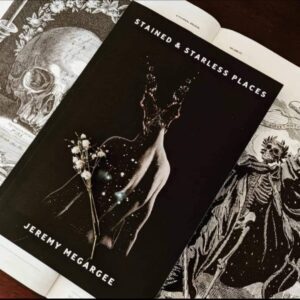 Click for the pic for more of Megargee’s cosmic visions on Amazon!
Click for the pic for more of Megargee’s cosmic visions on Amazon!5. The return to nature and… cannibalism. Merrill’s world is very (pardon the pun) dog eat dog; his cannibal followers are as likely to eat one of their own as an outsider. Merrill seems to like their bestiality, however, and on several occasions muses that he wants the world to return to a more primal, animal state—a state of nature. This state of nature seems to be the one described by 17th century philosopher Thomas Hobbes, who thought humanity without civilization would be a war of all against all, and life would be “nasty, brutish, and short.” Do you think the view of a state of nature in Crown of Carrion is Hobbesian? Are all of Merrill’s ideas tainted by Merrill’s viciousness? Why or why not?
JM: That is such a cool observation, and I think Merrill would have loved the Hobbes philosophy. I think Merrill wants humans to return to a state of base animalism because that is all he knows. Merrill is intimately familiar with viciousness. He has felt it, and it makes him proficient at inflicting it. If all of humankind is pulled down into the blood and the muck with him, then he is no longer the outsider. He is not alone in his despair and his depravity. He can be that haunted wounded dog that he is, and he can watch every person on the planet learn to know what that feels like. He wants to normalize viciousness. Something twisted and feral, and most importantly, something that he understands.
I touch on that theme a lot in my older werewolf novel Old Hollow. There is a character in that book named Endre Calder, and he shares much of Merrill’s sentiments about embracing the animal within. And for a fun Easter egg for Old Hollow readers, Endre just might have been the great white wolf that sired Merrill Sade and turned him into what he is.
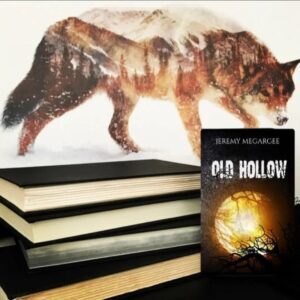 Click the pic for more wolfy goodness on Amazon!
Click the pic for more wolfy goodness on Amazon!6. Dangerous Chemistry. Soulmates focuses on the development of the relationship between Ambrose, who suffers from Cotard’s delusion, which basically makes him believe he’s a walking corpse, and Dandelion, who likely suffers from an unnamed mental illness, difficult at least for this layman to pin down because she is in an almost perpetual state of trauma. What made you interested in Cotard’s delusion? What did you do for research? For Dandelion I thought maybe a borderline personality disorder… did you have a specific diagnosis or diagnoses in mind? Whatever their maladies, what makes the characters’ combination so “toxic” and yet, for each other, so potentially liberating?
JM: Phenomenal question, and I’ll answer by saying that I have something of an obsession with mental illness. I’m open about my own struggles with mental illness, so it has been a defining feature of my life, and I’m always aching to find the meaning in it. Cotard’s delusion is a particularly disturbing brain malady, and it has roots in the days when mental health institutions were barbaric in their treatments. It is the psychological belief that you are a walking cadaver. It stirs feelings of apathy, depression, and you lack a true sense of self. After all, if you’re dead, why try? In our introduction to Ambrose, we learn that living with it has severely impacted him. He’s in a sort of life stasis, and the events of the novella force him to confront that.
Spot on with Dandelion, too. I never had a specific mental illness in mind for her, but borderline personality disorder would fit her very well. I have friends who suffer from BPD, some of the most creative and passionate people I know, but I’ve also seen the depths of their suffering. It is often described as the emotional equivalent of having third degree burns. Dandelion loses herself in those depths often, and leviathans are always waiting to drag her deeper.
I think the two of them coming together is so potent because they are worlds apart. Ambrose is stoic, a lost nihilist, and Dandelion is a bloom of colorful chaos that appears in his life. They feed off each other. In essence, their love is parasitic.
7. Self-Harm. This subject comes up in Crown of Carrion as well: what does self-harm signify for you psychologically, and why is it prominent in your fiction? In Soulmates characters turn to self-harm for different reasons. Is either justified? Why or why not? Do your stories tend more often to justify or pathologize masochism? Why?
JM: I love this question because I’ve never really thought about where it comes from, but you’re right, self-harm is prevalent in my work. It bleeds up from the subconscious. In my youth, I struggled with self-destructive tendencies. I’d leap from planes and sky dive just to feel something. I’d crawl through cave passageways because it distracted me from the brain demons. I’d seek out the most feral sex, the most numbing activities, all of it a scream into the void, a middle finger to the void, as if to say, if this internal turmoil is my constant, I will find ways to release it.
There is the old adage “hurt people hurt people,” but speaking on a personal level, there is no one I’ve ever wanted to hurt other than myself. Through therapy I’ve left many of those self-destructive tendencies in the past, but they still bubble up on occasion. When they do, I have to put those feelings somewhere.
I put them in Merrill Sade. I put them in Ambrose. I put them in Dandelion. My characters can act as pain receptacles, and I suppose it’s a healthy way to practice masochism. You’ll find many of these same themes in my short fiction collections, Stained & Starless Places and These Little Roads of Ruin.
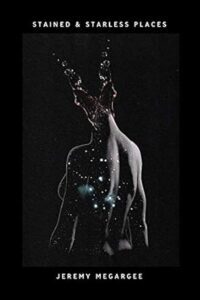
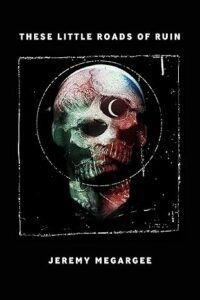
8. “His gore princess and his alone.” Ambrose and Dandelion both wonder a great deal about owning one another. For them, or for any of us, is there love without possession? Is there possession without objectification? What sets these characters up to experience such possessiveness? Is violence an expression of their romance—and how might violence in general be romantic?
JM: I think in the darkest realm of human emotion, we can be possessive. We can be territorial in the same way that animals are. We can crave and want and yearn, and one of the most volatile emotions to ever exist is passion. Men and women have died for passion. Cities have burned for passion. Wars have started in the name of passion. There is no greater hunt than the hunt for a heart that matches your own. Romance can be dangerous, because you risk all of yourself with the act.
9. Found chat-age. Records of Ambrose and Dandelion’s online chats compose much of the novella. How similar and how different are these “raw” moments from found footage in cinema? Should readers “see” anything but text during these moments? Are we supposed to distrust either character or favor either character’s implied perspective during the chats? What sort of commentary is Soulmates making about online dating, particularly in niche areas of online culture?
JM: I think I set so much of Soulmates in that limbo of cyberspace messaging because it has become a deeply rooted part of our modern culture. Often now, love is born online before it ever even translates over to real life. Because I focus on the more damaging parts of that in Soulmates, I think it’s a commentary on where we are as a society. We crave romantic love. It is taught in childhood through every form of media to crave that. And yet online dating is so dispassionate, this meat market of comparison and mindless swipes. Always seeking the next best option, never understanding the full weight of what makes a person a person aside from a few photos and a brief bio. There’s very little humanity in it. I think when you read articles or watch videos about young people in this generation’s dating scene, there are frequent comments on how demoralizing it is.
But then there are those rare moments when the universe aligns, and you find someone that is everything you’re looking for. That’s what happens with Ambrose and Dandelion. They look for love in all the wrong places, and they find it, and they proceed to celebrate their wrongness.
10. Access! How can readers learn more about you and your works (please provide any links you want to share)?
JM: I’m most active on Instagram; feel free to follow me at xbadmoonrising. My new books are releasing from Curious Corvid Publishing (on all social media platforms) so feel free to follow them too. You can find the majority of my novels and short stories on Amazon under the name Jeremy Megargee. I’m also active in several horror writer conventions on the east coast, including Scares That Care: Authorcon, so there’s a good chance you’ll see me out in the wild selling books sometime.
About the Author
Jeremy Megargee has always loved dark fiction. He cut his teeth on R.L Stine’s Goosebumps series as a child, and a fascination with Stephen King, Jack London, Algernon Blackwood, and many others followed later in life. Jeremy weaves his tales of personal horror from Martinsburg, West Virginia with his cat Lazarus acting as his muse/familiar. He is a native of Appalachia, and you can often find him peddling his dark words in various mountain hollers deep within the wilderness.
The post Interview with Author Jeremy Megargee: Crown of Carrion and Soulmates appeared first on L. Andrew Cooper's Horrific Scribblings.
July 19, 2024
Producing the Audiobook for Records of the Hightower Massacre
Records of The Hightower Massacre is queer horror dystopian fiction that would best be enjoyed by readers who have speculated about the dark future in the US for LGBTQ+ people. With elements of the fantastical grounded by an all too real fear, Records is a glimpse into the nightmare we’re all facing as legislation rolls backward and reduces our rights for protection against discrimination based on our identities and orientations. There’s an excellent contrast between the two protagonists, Aubrey and Ash, the former’s consistent dark humor and the latter’s naivety, which slowly gets suffocated as they fight for a better life in a society that’s fighting to break them. Their journey from the confines of a conversion facility to gaining closure is a tragedy that I found as intriguing as I did haunting.
The book hosts a diverse cast of voices fitting for its place within LGBTQ+ literature, and the audiobook grants an edge to the emotional punches while I read. In the villains, you can listen for the weight of Samson Cash’s command, Marco’s spitting drawls, and the jovial frat boy and toxic Karen energy of the Stout couple. A compliment I enjoyed most from the authors is that Dan Forsythe, whom I viewed as the demonic incarnation of the dystopia’s oppressive, parasitic system, sounds like a used car salesman. Among the unfortunate residents of the Hightower course correction facility, you can enjoy Helen’s wry inflection, Bill’s gruff world-weary air, and Hu’u’s ominous one-liners. I’ll let you make up your minds about what you see (or hear) in Aubrey and Ash!
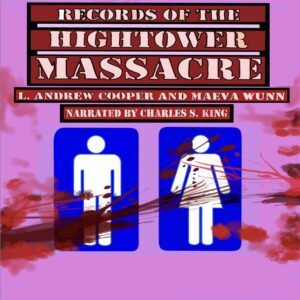 Click the pic for the audiobook on Amazon! It fits well with the e-book!
Click the pic for the audiobook on Amazon! It fits well with the e-book!Until I produced the audiobook, I didn’t realize how many details I had lost while reading the novella. So much more movement goes into the dialogue, and the pacing feels more dynamic. The primal, backed-into-a-corner fear evoked by the facility becomes fully rendered.
Narrating Records of The Hightower Massacre was an exercise of love and pigheadedness. My journey narrating this audiobook contained its own challenges, though much less perilous. My errors as I learned how to narrate tended to be fraught with silliness, not horror.
In the same way my brain pictures a strawberry whenever I say “tomato,” I am perpetually stuck in dumb confusion limbo when anyone spells letters aloud. And numbers. I’m also nearly incapable of following verbal directions because I don’t “hear” them. Undiagnosed auditory processing issues aside, I dislike doing impressions. I had also never listened to an audiobook in my life, which led to a lot more embarrassment upon deciding this would be a fun new job. I love writing and reading, after all. I thought, how hard could it be?
Not impossible. But the editing. Lords above, was it a test of my patience. Five minutes of audio you listen to can take an hour to produce if I’m lucky, being a total greenhorn. I’m already getting sidetracked so I’m not going to get into the specifics.
As possibly the least qualified person ever to attempt narration, I started doing auditions. Ordered some better recording equipment and an editing program since I quickly learned that pushing around the little sound waves on my phone is a complete and utter pain.
Scrolling on ACX–the audiobook website for connecting writers with narrators–I saw the trans colors of Andrew and Maeva’s book, skimmed it in a half delirious insomniac afternoon, and added it to my “later to-do” pile. Near incoherent, my brain only picked on some politic-looking acronyms–my arch nemeses. Can’t record those if I can’t hear the letters straight!
In the meantime, I got used to the new programming for sound editing, fended off a scammer weirdo trying to poach my audio samples on ACX, reported him, added another audition–another rejection–and rediscovered my “later” pile I’d already forgotten about.
I read the summary for Records. It looked great! I read the script and knew I had to get the role. I put my audition together. Not sounding desperate at all, I placed my little blurb of “Pick me I’m super gay!” next to my submission, along with a note that I was willing to re-audition if necessary. When I’d asked, a former author was kind enough in a prior audition after rejecting it to give me some good advice on starting with voicing what you know.
Unsurprisingly, I had to re-audition. Surprisingly, I got the role!
Next was only the simple matter of feminine vocal training. I’ve never known how to sound like a girl, and the best resources I could find for training were a bunch of transwomen on YouTube. Countless tutorials later, I hit record and did my darndest not to sound like a man impersonating a woman.
I started listening to Andy Weir’s Project Hail Mary on Audible while making chainmail in my free time. It’s brilliant! Helped me get better at pacing while doing recording and edits.
Some challenges I had recording for this: I couldn’t for the life of me pronounce “sojourner.” Couldn’t hear the stress difference. I practiced…for so long. I also kept getting gently scolded by Maeva for adding bad southern accents to their characters–admittedly, an easy fix. It was just too fun. I made Samson Cash sound like a clown for one statement then had to redo it. Totally ruined his menacing of Hightower’s sojourners. Last is the character, Marco. Real nasty fellow. For me to produce the narration, it’s really truly acting. Keep in mind I’ve never done theater, let alone impressions. To voice him, I had to feel mean. I cuss a lot, but it’s different when it’s targeted aggression. Doing that, even in the privacy of the cabin where I record, made me feel indescribably icky.
The character I most enjoyed voicing was Samon Cash. There’s just something about his blustering that adds to his repulsiveness. Even if it was difficult to get myself to be so loud. My favorite written character is Helen–shoutout to Andrew for writing her in! It was easy voicing Ash and Aubrey since their personalities, if you cross them, are disturbingly close to mine.
I’m incredibly thankful to Maeva and Andrew for allowing me to produce an audiobook of Records of The Hightower Massacre. Its production was a first for all of us, and they were an immense help in spot-checking errors.
Please check out Maeva and Andrew’s other work! I’ll be getting my writing published soon under the name C. R. Bride if you wish to support me there, and should I complete more narrations they will continue to be as Charles S. King.
NOTE: From Friday, July 19. 2024 to Sunday, July 21, 2024, the e-book of Records of the Hightower Massacre will be free on Amazon to cover all time zones in relation to the Dark Mode Books “Stuff Your Kindle” Event. I don’t know about you, but when I listen to a book, I like to have the text handy, too. Why not pick up both? – Andrew
About the Author
I’ve always been drawn to the eerie and unusual. I write psychological horror, fantasy, queer, romance, and have a flair for the gaming genre. I’m twenty-one and a recent graduate from Lewis & Clark College, OR, with a Bachelor’s in English. Shortly upon graduating early so I could move out of my apartment to undergo major surgery, I returned home to recover without a sure-fire game plan. Working as narrator for Records of the Hightower Massacre was an exciting way to get back on my feet while learning about another side of publishing. I’ve only published at my college and high school magazines between commission paintings (Andrew and Maeva graciously let me modify their book cover), though I’ve outlined several series and standalones that I will be publishing within the next couple of years.
I hope to return to voice work eventually. To pay the bills I’ve been bartending at the family business and picking up odd jobs here and there, such as babysitting, groundskeeping, and office work. I’ve been learning Japanese and completing TEFL certification so I can teach English abroad. My present goals are to work in Japan, get my first novel published, collect more tattoos, and adopt a Main Coon.
Find me under the pseudonym C.R. Bride using the links provided. I rarely post, so don’t be alarmed by my absence!
https://www.instagram.com/c.r._bride?igsh=YzAwZjE1ZTI0Zg%3D%3D&utm_source=qr
https://www.instagram.com/kulthum0?igsh=OGQ5ZDc2ODk2ZA%3D%3D&utm_source=qr
The post Producing the Audiobook for Records of the Hightower Massacre appeared first on L. Andrew Cooper's Horrific Scribblings.
July 17, 2024
Interview with Filmmakers Jason Zink and Nolan Mihail: looky-loo, “TAPEHEAD,” and Night Terrors
Adventurous and captivating director-writer team Jason Zink and Nolan Mihail discuss their forthcoming feature horror film looky-loo, and then Jason sticks around to comment on his short mockumentary “TAPEHEAD” as well as his soon-to-be-rereleased shorts anthology Night Terrors.
looky-loo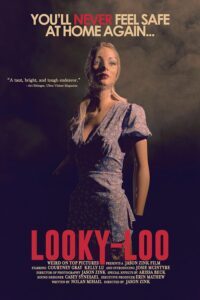 Click for the teaser trailer on YouTube!
Click for the teaser trailer on YouTube!An aspiring filmmaker obsessively captures footage everywhere he goes, but his hobby takes a dark turn when he begins using his camera to stalk and film women. As he hones his craft, his crimes escalate from voyeurism to home invasion and, finally, to murder. looky-loo explores themes of voyeurism, obsession, and the power of images, with a chilling atmosphere and gritty, disturbing imagery that will leave viewers terrified long after the credits roll.
Releasing soon!
“TAPEHEAD”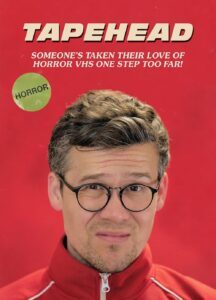 Click to watch the full film on YouTube! ~9 min.
Click to watch the full film on YouTube! ~9 min.A film crew follows a horror-obsessed VHS collector as he puts himself in dangerous situations to find his holy grail tapes. Available for you to watch now on YouTube!
Night Terrors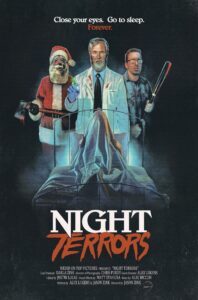
A devious older sister fills her brother’s head with bizarre tales of terror, blood-soaked memories, and nightmares of perversion after finding out that she has to babysit and miss the party. Returning soon from Scream Team Releasing!
The Interviewlooky-loo
1. Peeping Toms and Killer Cameras. You shot looky-loo entirely from the perspective of the voyeur/invader/killer’s camera, effectively putting most of the film into first-person perspective (POV, or point of view). Many horror fans think Halloween (1978) innovated the first-person, killer’s-eye-view (“killer-cam”) use of perspective in horror, but its use is of course much older, likely with examples going back to very early film but emerging spectacularly in Peeping Tom (1960), a film about a killer who not only stalks women with his camera but also kills them with a weapon he attaches to it. Of course, 1960 was also the year of Psycho, which contains a particularly famous scene about voyeurism and showering. looky-loo shows us showers more than once… how did these earlier films, or other films, influence your approach to telling your story? What do you add to the killer-cam tradition? Why do you think viewers are ready to be immersed in killer-cam POV for the run of an entire feature?
JZ: Truth be told, I’m not certain that they are ready… but this is where we’re at, and we think they’ll catch up. While films like Henry: Portrait of a Serial Killer and Peeping Tom played with the killer as a filmmaker motif, we believe that we’re the first to commit to the format for an entire film, at least so strictly. And funnily enough, the idea for this project stemmed from a misunderstanding between Nolan and me. I had suggested making a low-budget version of Elijah Wood’s Maniac, but Nolan believed I was suggesting the killer was behind the camera filming his crimes. So, the idea came from both of us and neither of us simultaneously. Our team believes that this film places its thumbs in the eyes of true crime junkies and holds a mirror up to society. This, coupled with our homages and references to classic films like Psycho and Halloween, raises important questions about how we view violence and violence against women, especially.
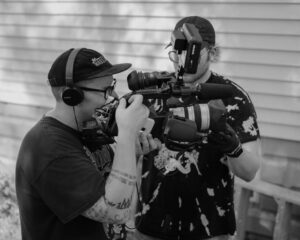 A behind-the-scenes look at the camera in action
A behind-the-scenes look at the camera in action2. Shared Perspectives. Film as a medium is, in some ways, all about voyeuristic pleasures. Does the man behind the camera in looky-loo (named “Looky-loo” in the credits) raise questions about sadistic voyeurism in the medium as a whole? As Looky-loo searches through women’s underwear drawers and otherwise indulges in voyeurism and home invasion, the viewer does, too, seeing what Looky-loo sees as a result of Looky-loo’s crimes. If Looky-loo is guilty for his voyeurism, does the viewer share in his guilt? Why or why not? Similarly, the viewer shares Looky-loo’s perspective on murders… any shared guilt there?
JZ: 100%. The film sort of begs you to turn it off, which we realize is a risky gamble. But we felt that it was important to make the film that Looky-loo would actually make, as opposed to a super entertaining horror film that a traditional filmmaker would create. It’s also important to put it on front street that this was planned as a trilogy early on. In the forthcoming sequels, we will stay committed to the structure, but our killer has gained more experience as a filmmaker. We’re daring audiences to come on the ride with us, and we hope they become more complicit and conflicted as the franchise moves forward.
NM: I think that most people are voyeurs to a degree. It’s the same impulse that drives people to read the tabloids or gossip about people they don’t really know. We love to know other people’s business. I think we kind of banked on that as a kind of lure to make sure people don’t stop watching as the action ramps up, and it seems to have worked pretty well.
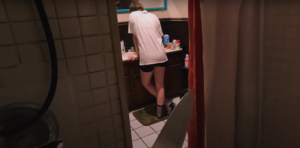
3. Found Footage. Is your film looky-loo the same as the film Looky-loo is shooting within looky-loo? Yes or no, how are you twisting and/or expanding the found footage tradition in horror? The idea that the footage is “found” opens up a possibility in addition to viewers being accomplices along for the ride with Looky-loo: viewers could also be police, reviewing and judging the crimes. Do you think viewers police and judge Looky-loo’s illicit pleasures? Why or why not? If the film is Looky-loo’s, why does he include shots of his own editing process? A quirky question—Looky-loo’s shadow appears onscreen quite a bit, a very nice effect but one that seems hard to get with only natural light and the camera he’s holding. How did you get the shadow effects?
JZ: That’s an interesting question. We struggled a bit with how much we should commit to the premise. One of the festival programmers referred to it as “hard format,” which I think was pretty accurate. Other than the end credits, we never break the film’s conceit. So, while our film is ours, it feels like the killer’s movie. We anticipated some judgment or blowback from the audience, for sure, especially from women. We feel that the film is actually one for women, as opposed to the traditional slasher being from the male gaze. To be clear, the Looky-loo killer is not Jason Voorhees or Michael Myers, and we hate him. We were relieved to get a lot of positive feedback from the women in the audience at one of our screenings because we worried that they would misinterpret our message.
NM: At first, every editing room scene was essentially used like punctuation, just a device to break from one section and transition to the next. We weren’t sure what we were going to do with those at first. We had a long list of editing room activities, and some of them were really off the wall and didn’t make it into the final film. The idea of him including shots where he’s editing his own movie was compelling to us, because we saw that as almost an act of verification; no one else can take credit for this film because, look, here he is cutting the thing together. Looky-loo doesn’t want anyone to question the veracity of his work.
The shadows were all accomplished with natural lighting and standard room lights, actually; we didn’t set up lights at all to achieve those effects. Those were all happy accidents and clever blocking, but we also carefully curated our edit around them.
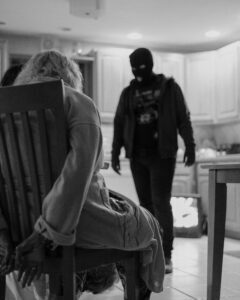 A rare look at Looky-loo
A rare look at Looky-loo4. Listen-loo. looky-loo contains almost no dialogue and no extra-diegetic music, which brings a lot of attention to ambient noise, especially birdsong and other natural details. Why did you decide to handle sound this way? What effects do you expect this approach to have? How did you craft the script? Did you start with a lot of written direction for shot angles and cuts (such as the montages for welcome mats and keys), or did those elements evolve during production? What did the original script look like? How long was it?
NM: We wanted looky-loo to feel as real as possible, and we really struck gold with Casey Synesael, our sound designer. It’s kind of ironic that as sparse and raw as it is, the majority of the soundscape for looky-loo was meticulously engineered. So much sound was added afterward. Audience members get used to the nondiegetic sound in movies that the absence of it can be really jarring, and that seems to put people on edge. People tend to be more open to a good scare if they’re a little bit ill-at-ease to begin with.
The script was written at a frenzied pace. We knew there wouldn’t be dialogue or much in the way of overt characterization, so the first draft was a scant outline, which evolved into a fairly detailed outline, about twenty pages long. When we had a sequence coming up, Jason and I would talk on the phone a lot to bounce ideas back and forth about shots and just the logistics of how to achieve a certain effect, and in most cases I would write a detailed synopsis of that particular sequence. The script was extremely unorthodox, but working with our budget and accounting for unexpected mishaps necessitated that the script be as fluid as possible.
5. Psychology in Images. Looky-loo, as a character, isn’t merely a sadistic voyeur or a mindless stalker. Images of places he inhabits and of his behavior suggest a much more finely crafted personality. For example, after he kills his first victim, he partially covers her body in bed. How would you describe his personality? What motivates him psychologically, and what are other key images you can comment on (without spoilers) that reveal his inner motivations? For example, why does he have a relationship with a mannequin? Another quirky question—why does he include so many shots of cats?
NM: I’m glad you’re asking about this because the research that went into the killer specifically was beyond exhaustive. I had to become a serial killer expert because Looky-loo couldn’t just be a movie serial killer, he had to be the real deal. He’s an amalgamation of a dozen or so real serial killers. Looky-loo has serious issues with intimacy and a resultant deep animosity towards women. He also has a God complex like Ted Bundy: he believes wholeheartedly that he’s better than everyone else, that he’s smarter and more talented, and that his actions are completely justified. Given all of that, his relationship with the mannequin kind of makes sense, and it isn’t unprecedented, either. Jeffrey Dahmer also had a mannequin that he used to sleep next to so he wouldn’t feel lonely. Really, even the creepiest behaviors Looky-loo exhibits are all par for the course for serial killers. His apparent fondness for cats might be unusual, though–most serial killers are pretty unkind to animals. Really, I think Jason Zink is a cat whisperer because that wasn’t in the script. He just got swarmed by cats, so we had to use it. No kitties were harmed in the making of this motion picture.
 Don’t mess with me, Looky-loo!
Don’t mess with me, Looky-loo!“TAPEHEAD”
6. Fandominion. As I’m sure you know, a real community exists for VHS collectors, especially for people who collect horror tapes. How do you think most such collectors would react to “Tapehead?” The portrait you paint of the tape collector is sort of loving and sort of harsh at the same time. What are your own feelings about this kind of collecting, and what attitude toward collectors do you mean to convey?
JZ: I feel that it’s dangerous to take oneself too seriously, so you hit it spot on. My view of collectors is both loving and harsh at the same time. When I see people arguing over tapes online or hear from a fellow collector that someone sent them a death threat for having sold out of a tape they wanted, I get understandably upset and judgy. Nobody should treat collecting so extremely. But since some collectors do treat it so direly, I have a feeling that a small percentage would feel seen by TAPEHEAD and hate it. But I know more who see the silliness and recognize that we’re lovingly poking fun at the community, myself included.

7. They Just Don’t Make ’Em…. How do you feel about the actual movies you represent, such as Frankenhooker (1990) and Jack Frost (1997)? Did any movies of that sort influence you? Do you share in any of your main character’s nostalgia? In the closing credits, you show stacks and stacks of movies, some of which are real classics… why do you show the titles you show (some of them made me feel nostalgic)? Where did you get all those VHS boxes?
JZ: A lot of the tapes you see are my actual tapes. I grew up wandering the aisles of my local video store and marveling at the box art of films like Sleepaway Camp II: Unhappy Campers and Scream. I collected when I was younger, but I got rid of most of my tapes in college. During the pandemic, I got back into collecting in a big way, which is what inspired the short. I think that nostalgia can be a dangerous thing, and recognizing that in myself, I wanted to make something that was self-deprecating. It makes me feel more normal than the character when I have put myself into weird situations to find some of my holy grail tapes. And some of the tapes that we show are kind of in-jokes for other collectors. Like the Linnea Quigley’s Horror Workout tape, which he pulls off of the shelf at a Goodwill, because there is just about zero percent chance of finding one in the wild for ninety-nine cents.
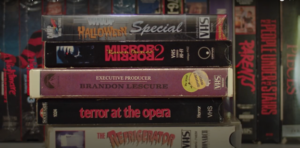
8. Documentary Doctoring. As mockumentary, “TAPEHEAD” pokes fun not only at its subject but also at documentary filmmaking, all while using spot-on documentary style. Jason, you’re also attached to direct another documentary project, “We Destroy the Family: The Story of Lee Ving and FEAR.” What’s your attraction to documentary style? Do you see yourself playing with this style more in the future? What can you reveal about “We Destroy the Family?”
JZ: One of my favorite movies of all time is American Movie. I plucked that tape off the shelves of my local video store at a young age, and it left a lasting impact. Ever since, I’ve been drawn to the documentary format. Sadly, the hard truth is also that we have very little money to produce our films. So, a lot of our projects are written that way out of necessity. It just works out well that I have such an affinity for documentary and mockumentary films. I’m sorry to say that the “FEAR” documentary is in limbo. We completed a few interviews and filmed several of their concerts, but the producer has struggled to find the money to complete the film. It isn’t dead, but we needed to move on with other projects.
Night Terrors
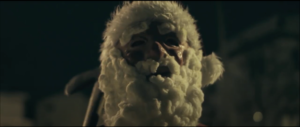
9. Subgenres. Night Terrors is an anthology of three short films. It starts with “Massacre on 34th Street,” which is, as the title suggests, Christmas horror. Why do you think Christmas horror is such a phenomenon? Why do some people find Santa so charming when he carries an axe? The second short, “Baby Killer,” is extreme horror with a touch of sci-fi about a disgraced scientist working with stem cells, and the violence goes much farther than I expected. Why does this segment go so far, and do you see yourself going to extremes in the future? The final story, “Abstinence,” is also pretty extreme, delving into body horror. What drew you to body horror, and why do you think it has become so popular?
JZ: We made “Massacre on 34th Street” before we knew we were working on a feature. I just wanted to dip my toes into horror, and we found an old Santa mask at an antique shop, so we based everything around that. I also grew up watching Tales from the Crypt, so “All Through the House” was obviously an influence. “Baby Killer” was written and directed by my buddy . Recently, we recorded an audio commentary for a 10th-anniversary release of Night Terrors. We both mentioned on that recording that we went to extremes we’re no longer comfortable with. I don’t regret any of it, but it just isn’t me (or him). At the time, I think that we were just trying to shock and prove something to horror audiences. In fact, Alex mentioned during that recording session that he was trying to overcompensate for his lack of horror experience, which is why it was so wildly written.
The question about body horror is a difficult one to answer. One of my oldest friends suggested a flesh-eating virus that spread through a college campus as an idea, so I ran with it. Living near a campus made it easy to imagine happening, and it basically wrote itself.
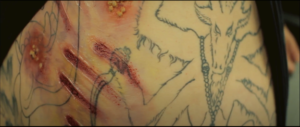
10. Fairytales. In the frame story for the short films in Night Terrors, the older sister refers to her stories as “old fairytales,” and while they’re not really old, they do all seem to have fairytale-like morals about behavior: Santa in “Massacre” seems more or less to go after people who aren’t so nice, the scientist in “Baby Killer” does forbidden stem cell research, and the horrors in “Abstinence” mainly strike the promiscuous. Are any of these morals serious? For example, what, if any, statement is “Baby Killer” making about stem cell research? Similarly, does “Abstinence” actually advocate for abstinence? Why or why not?
JZ: Wow, this is such an interesting set of questions. I don’t think Alex or I had ever considered those moral messages. At least not consciously. I can only speak for myself, but I don’t believe they are serious for either of us. Knowing that Alex only wrote “Baby Killer” to try to keep up with my tastes at the time, the film Inside being a favorite, “Abstinence” is the only one that carries any real message for me. While I don’t agree with abstinence-only education, I do think that safe sex and practical knowledge are hard to come by when you’re young and dumb. Growing up on movies like KIDS, sex was incredibly scary. So, while “Abstinence” takes those fears to the extreme, I don’t think it’s totally unreasonable to imagine something like this happening. Be safe out there, boils and ghouls.
About the FilmmakersJason Zink
Jason Zink is a writer, producer, and director best known for Straight Edge Kegger (2019). After a successful festival run, Straight Edge Kegger obtained distribution through Scream Team Releasing and found its way onto Shudder, Amazon Prime, and TubiTV. Jason previously released Night Terrors (2014) and When I Die (2009). His forthcoming feature, looky-loo, is scheduled to be released on February 1st, 2025.
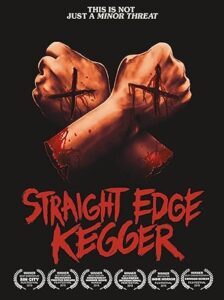
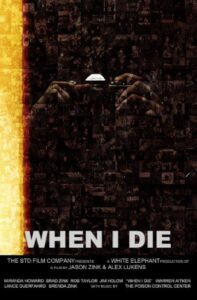
WEBSITE: https://www.weirdontoppictures.com/
INSTAGRAM: https://www.instagram.com/weirdontoppictures/?hl=en
FACEBOOK: https://www.facebook.com/weirdontoppictures/
TIK TOK: https://www.tiktok.com/@weirdontiktop
IMDb: https://www.imdb.com/title/tt27227397/?ref_=nv_sr_srsg_0_tt_8_nm_0_in_0_q_looky-loo
STORE: https://screamteamreleasing.com/
VIEW THE TEASER: https://www.youtube.com/watch?v=jlp68LFXyPo
FACEBOOK (PERSONAL): https://www.facebook.com/weirdontopjay/
Nolan MihailNolan Mihail is a writer, producer, and actor known for Peffersburg, OH (2019), Crawdad (2022), and looky-loo, which will be his first widely released feature film. When he isn’t working under the auspices of horror, Nolan writes and produces absurdist comedy shorts for his production company, Modern Travant.
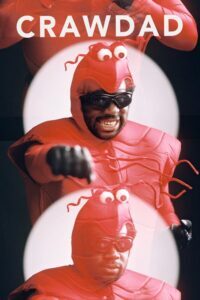 Click for the full movie on YouTube! ~15 min.
Click for the full movie on YouTube! ~15 min.The post Interview with Filmmakers Jason Zink and Nolan Mihail: looky-loo, “TAPEHEAD,” and Night Terrors appeared first on L. Andrew Cooper's Horrific Scribblings.



